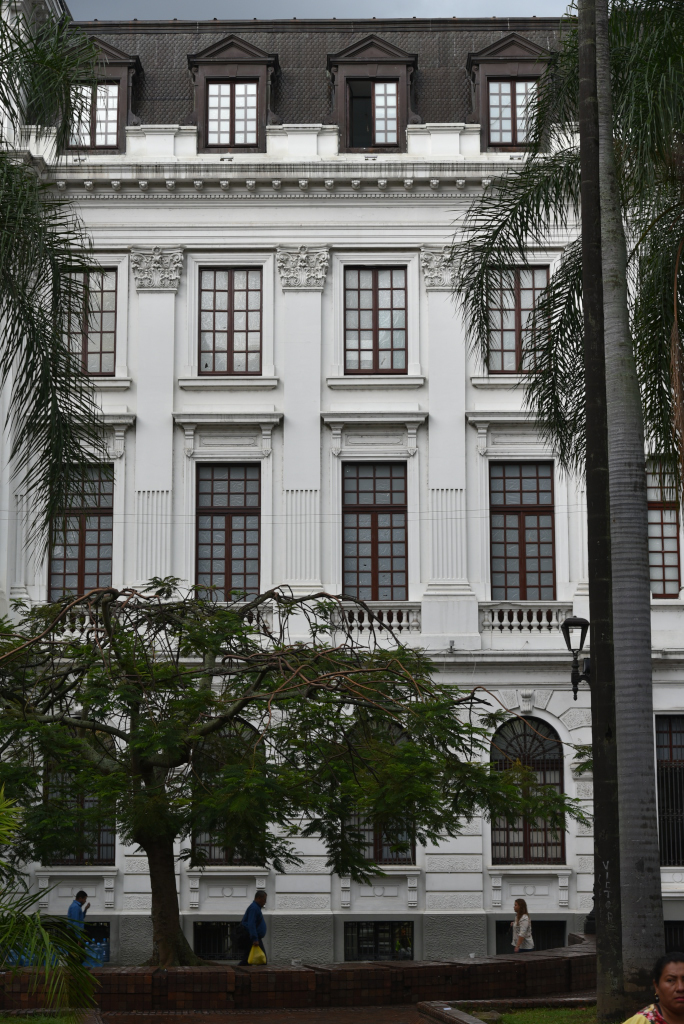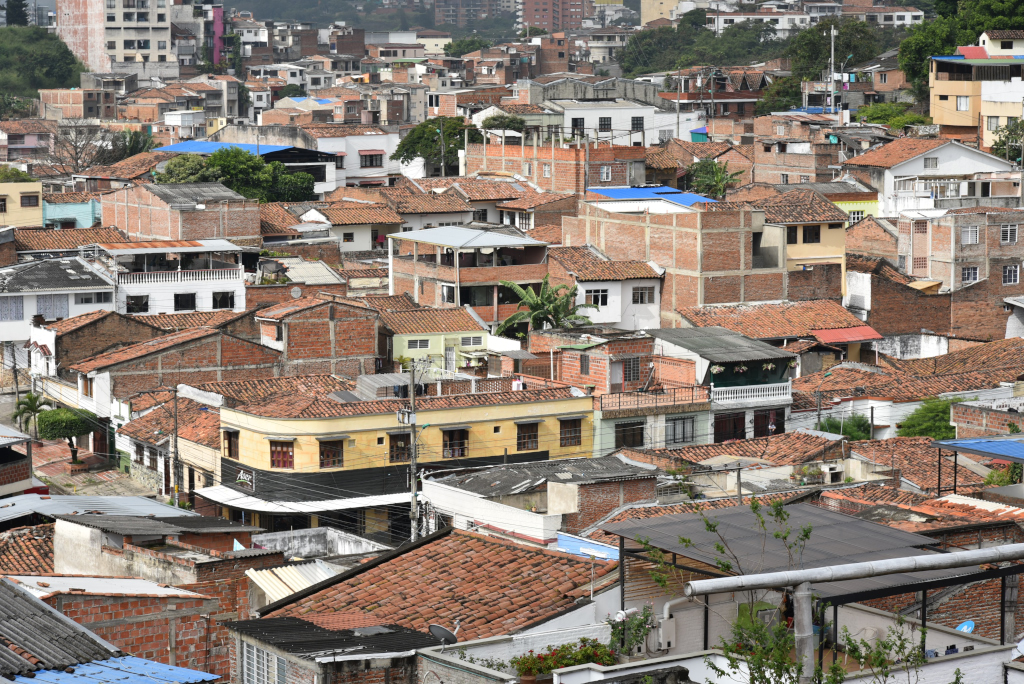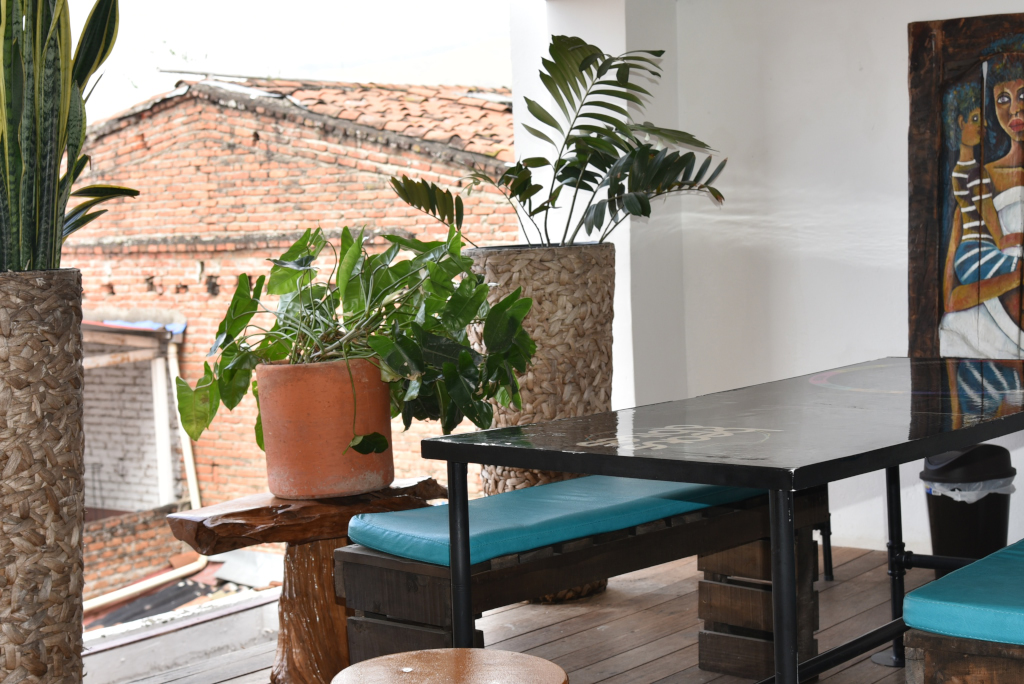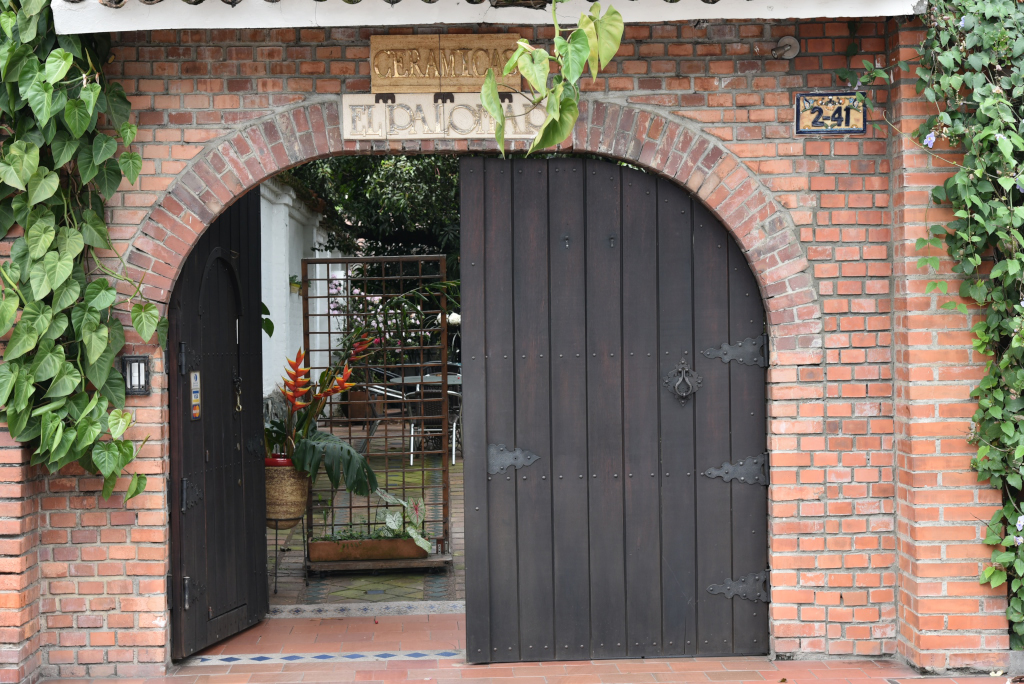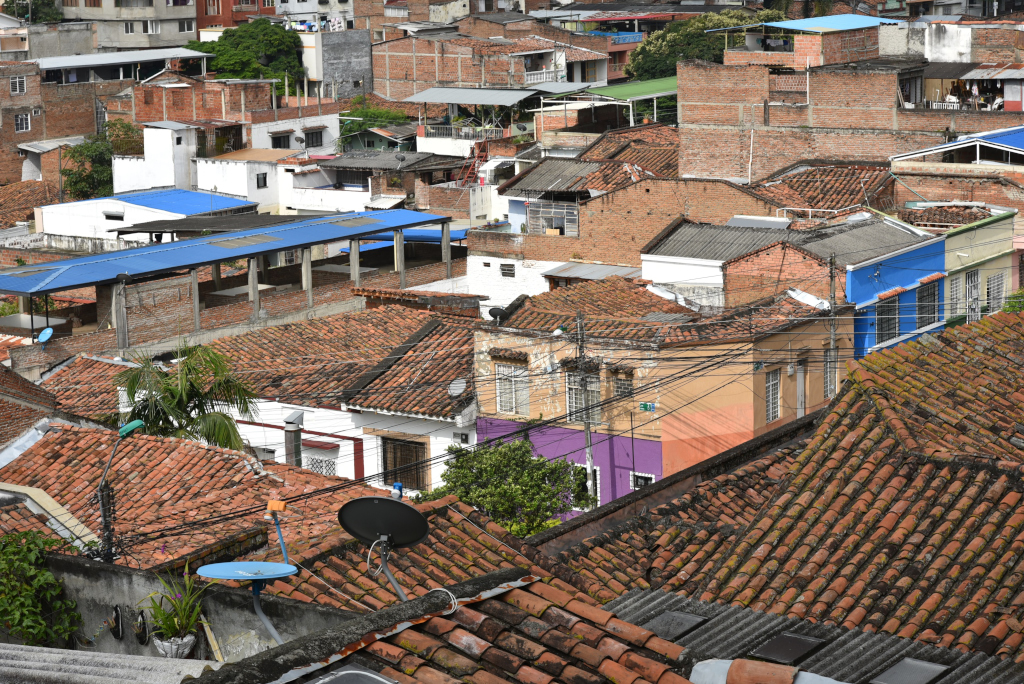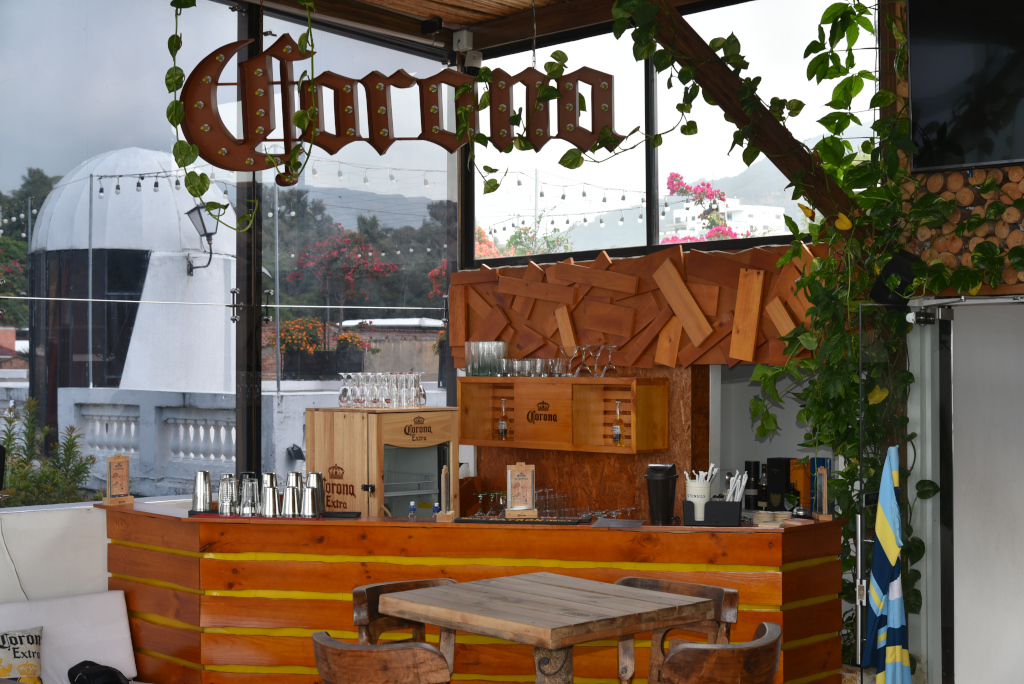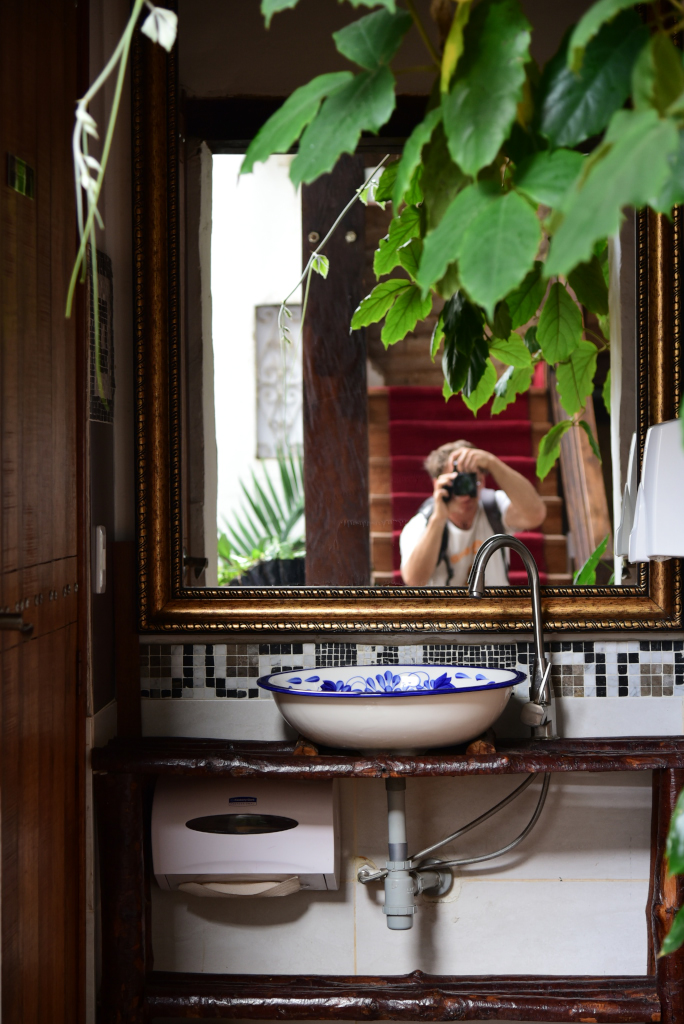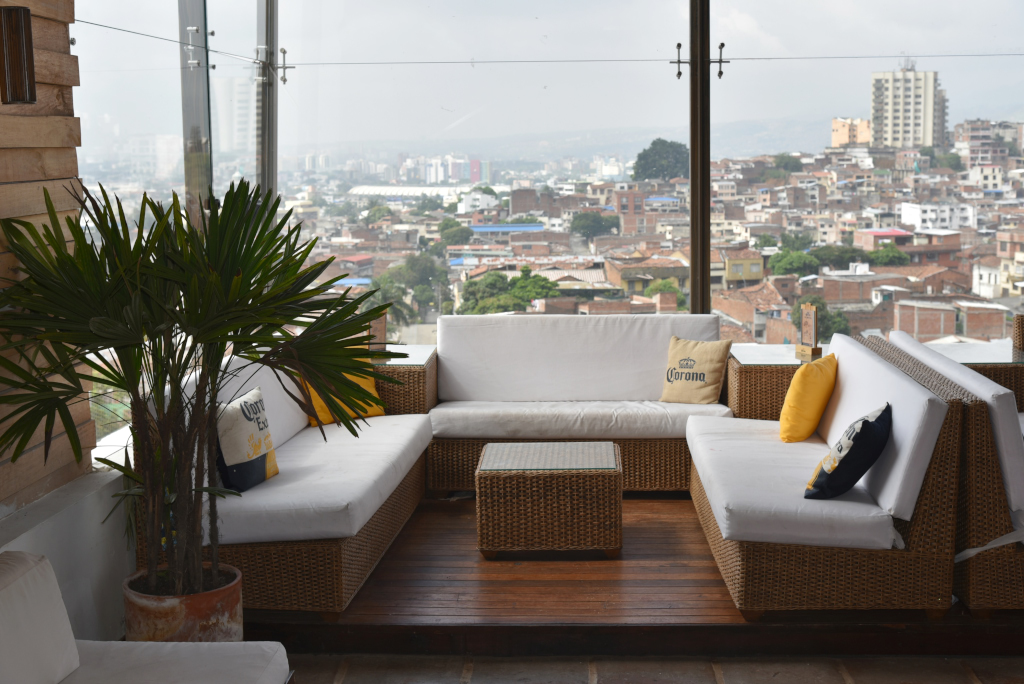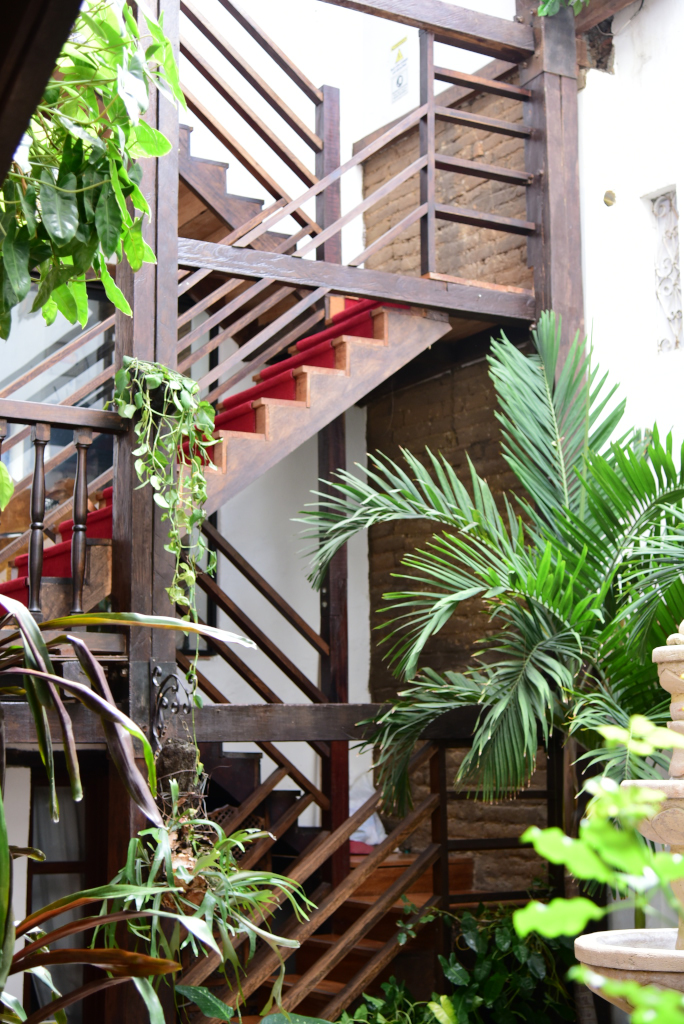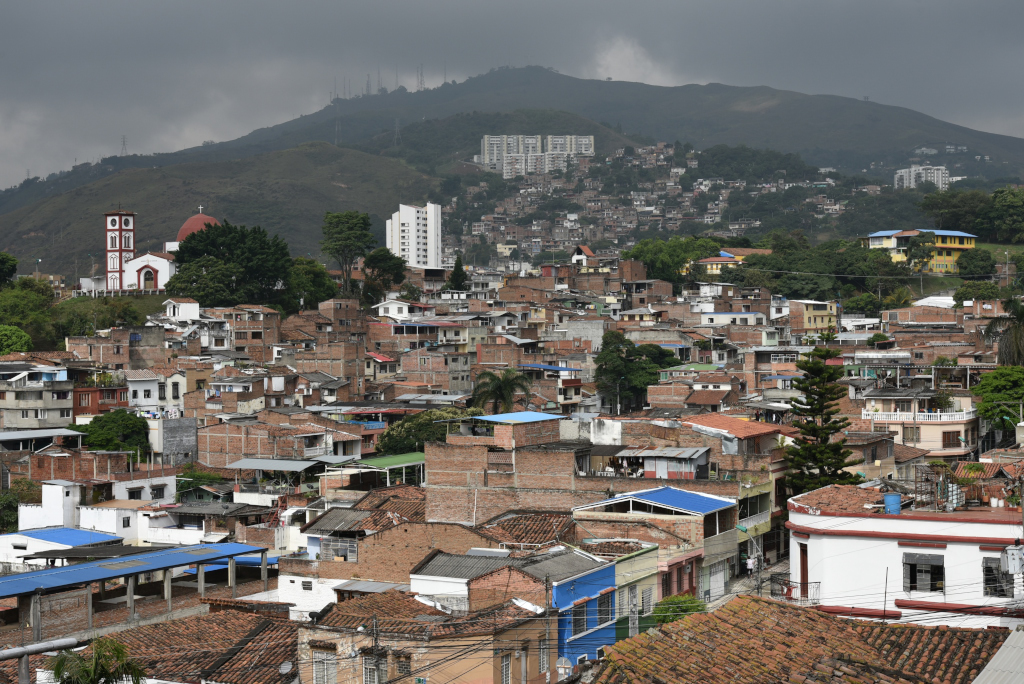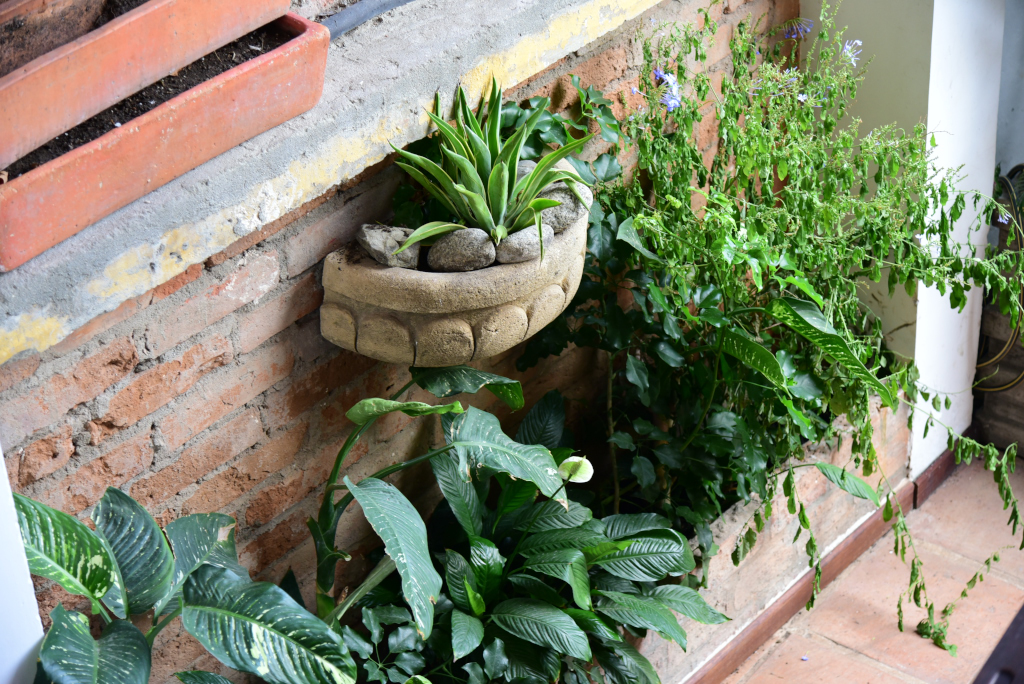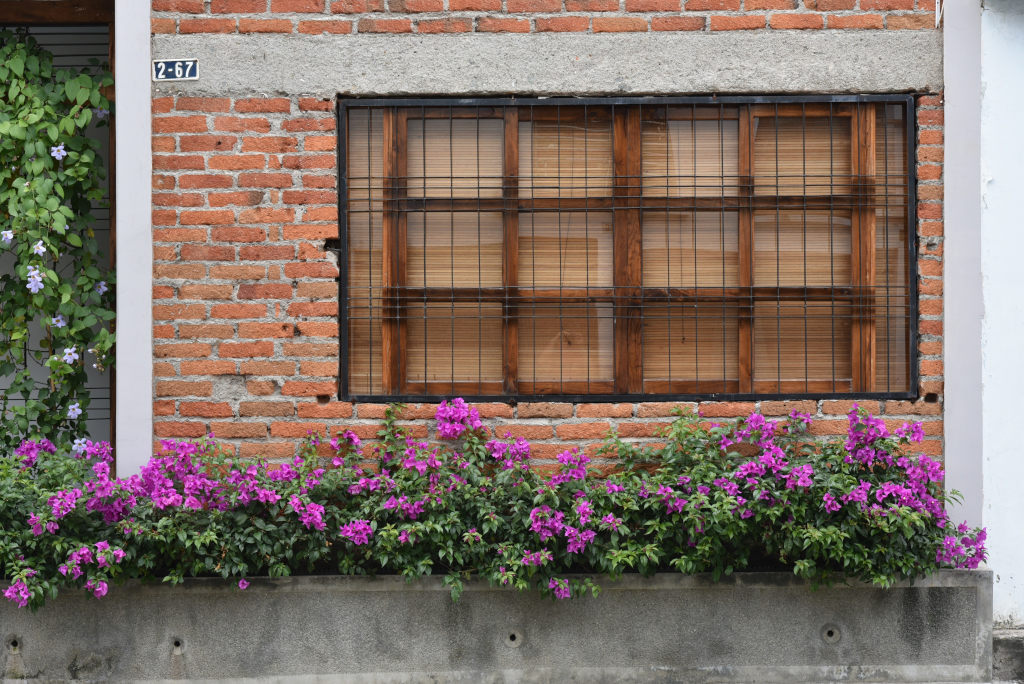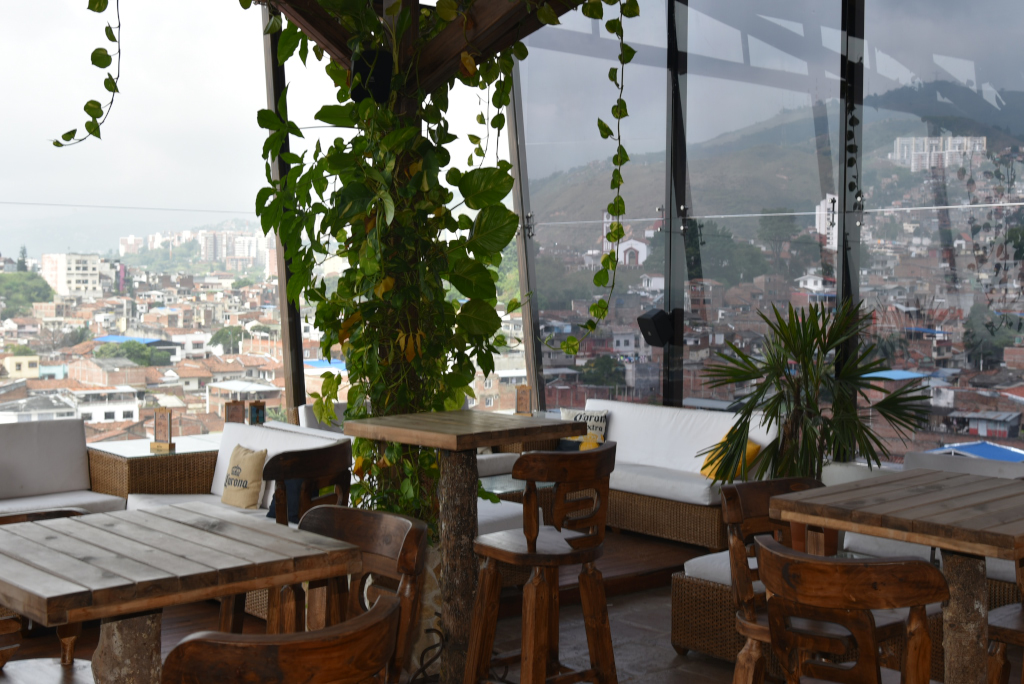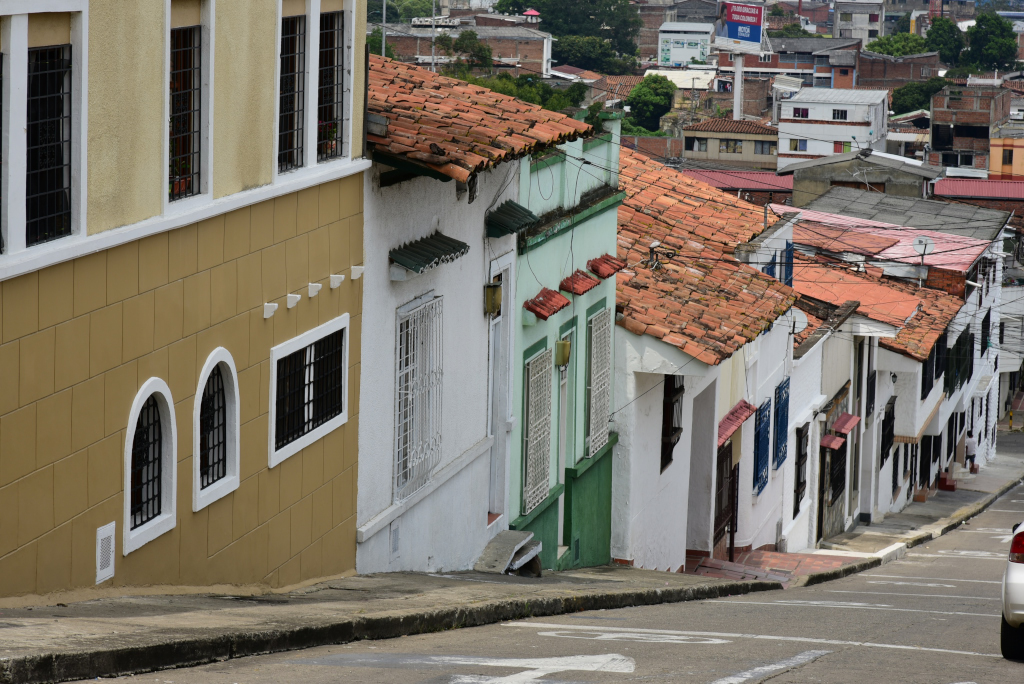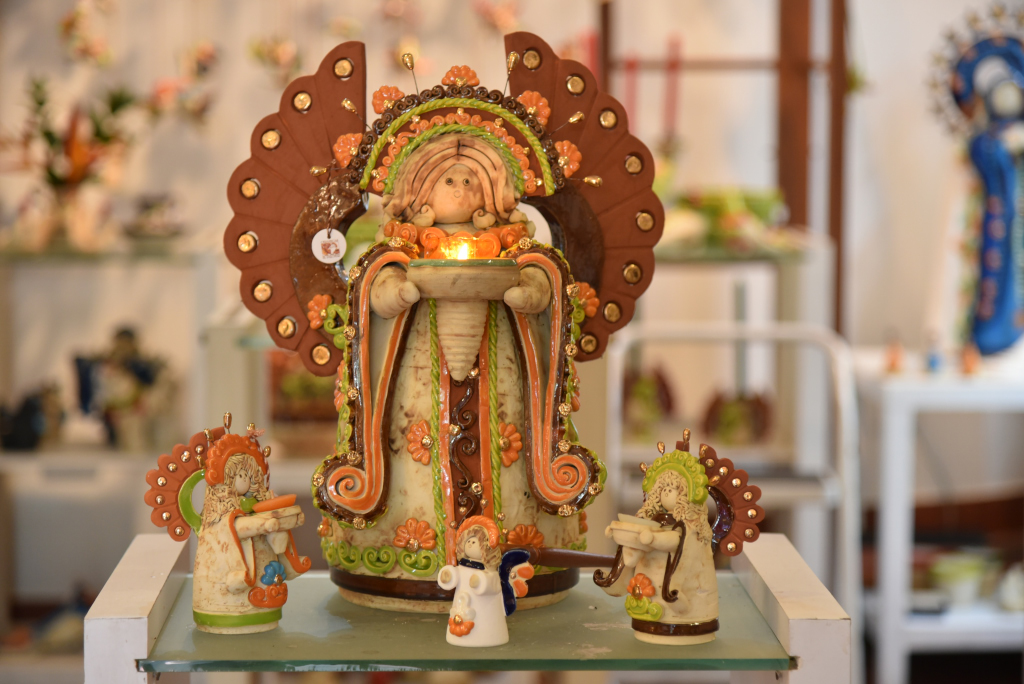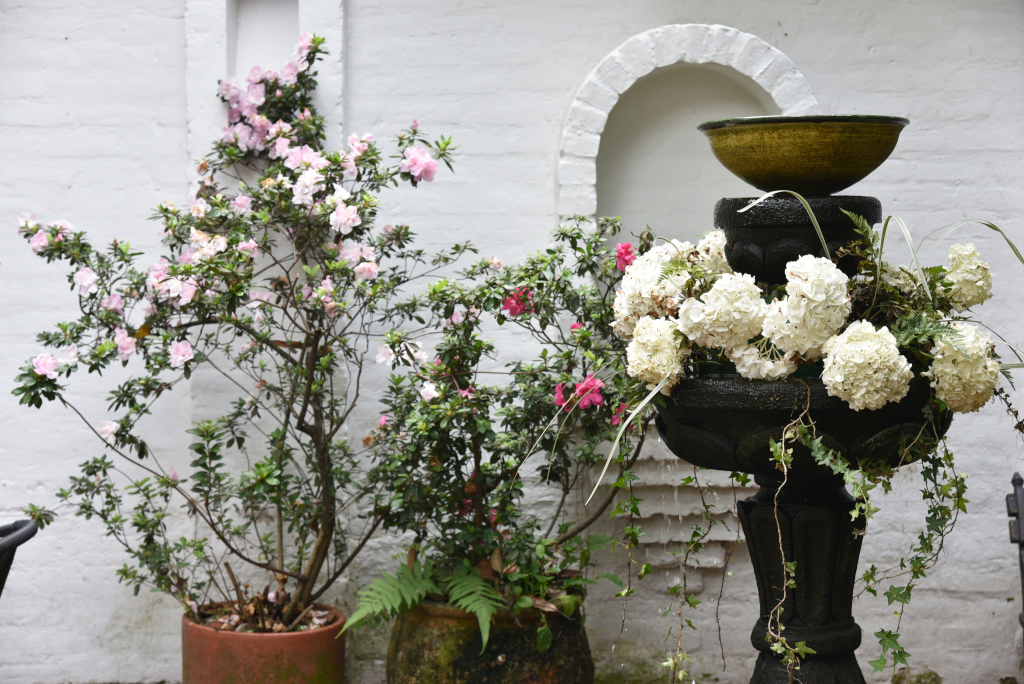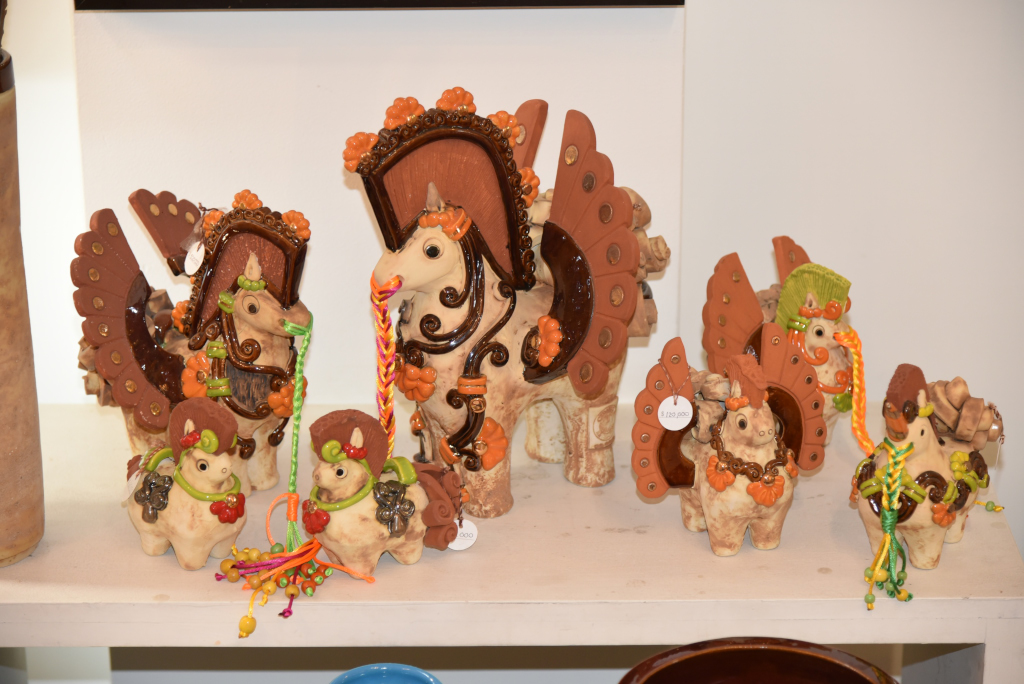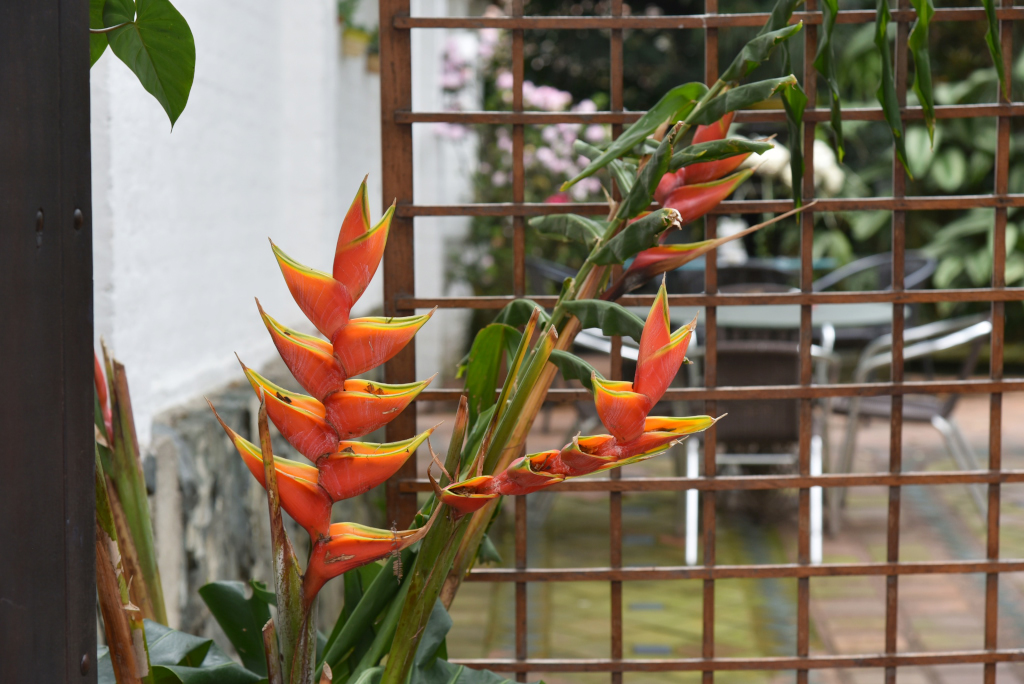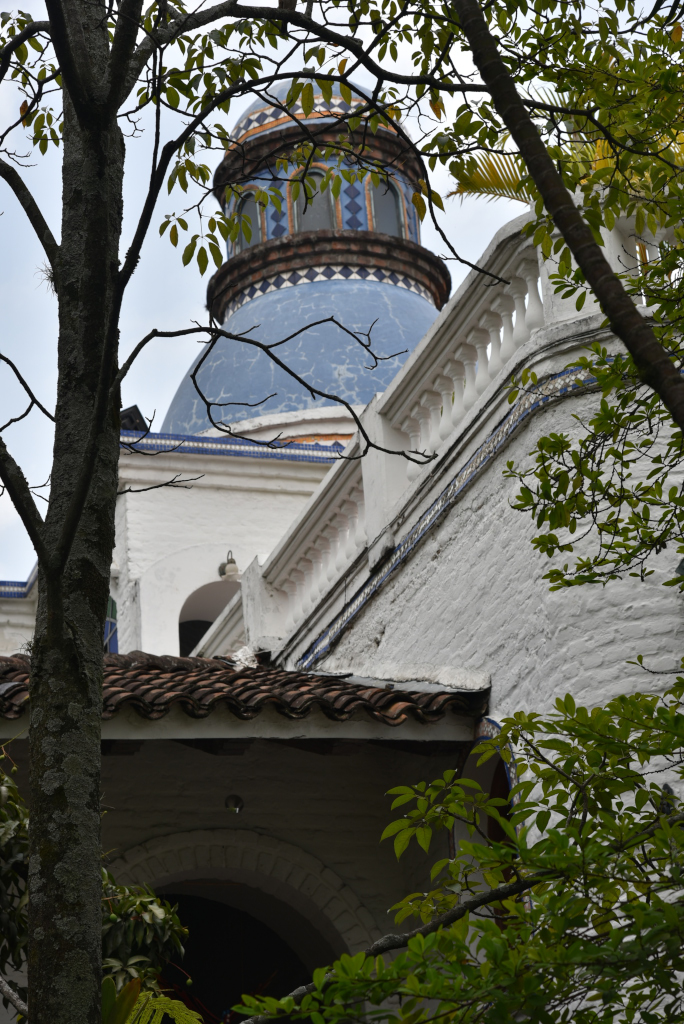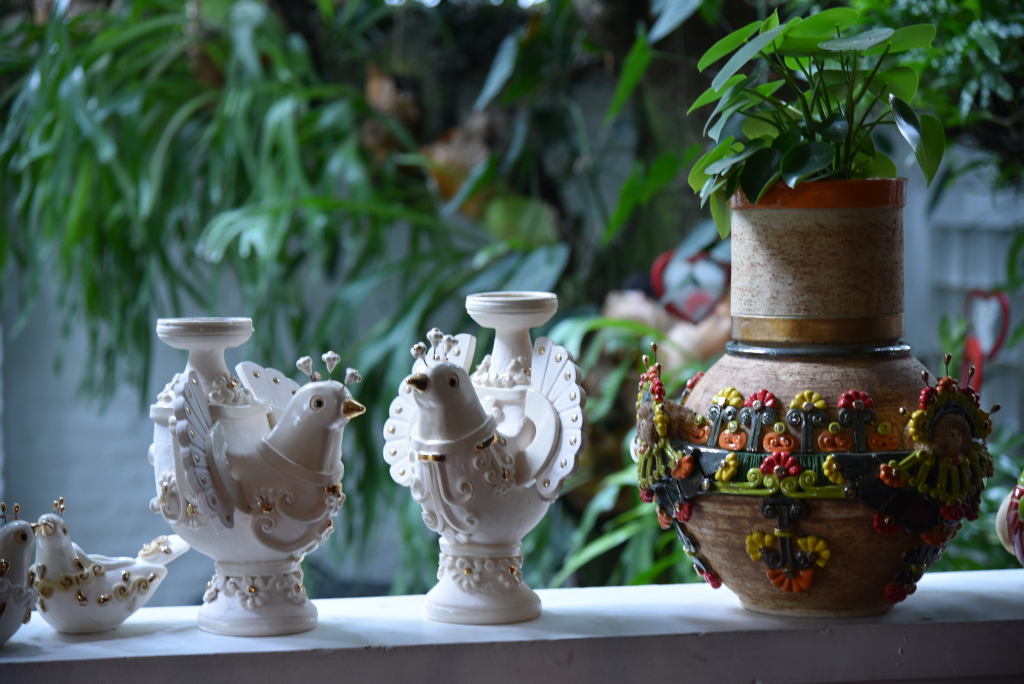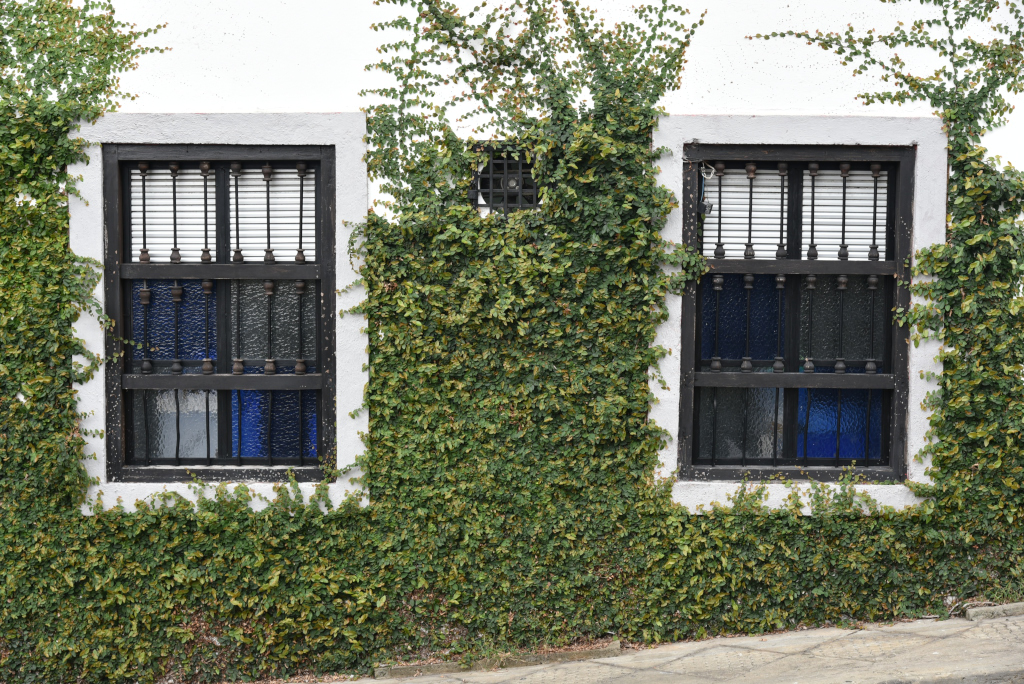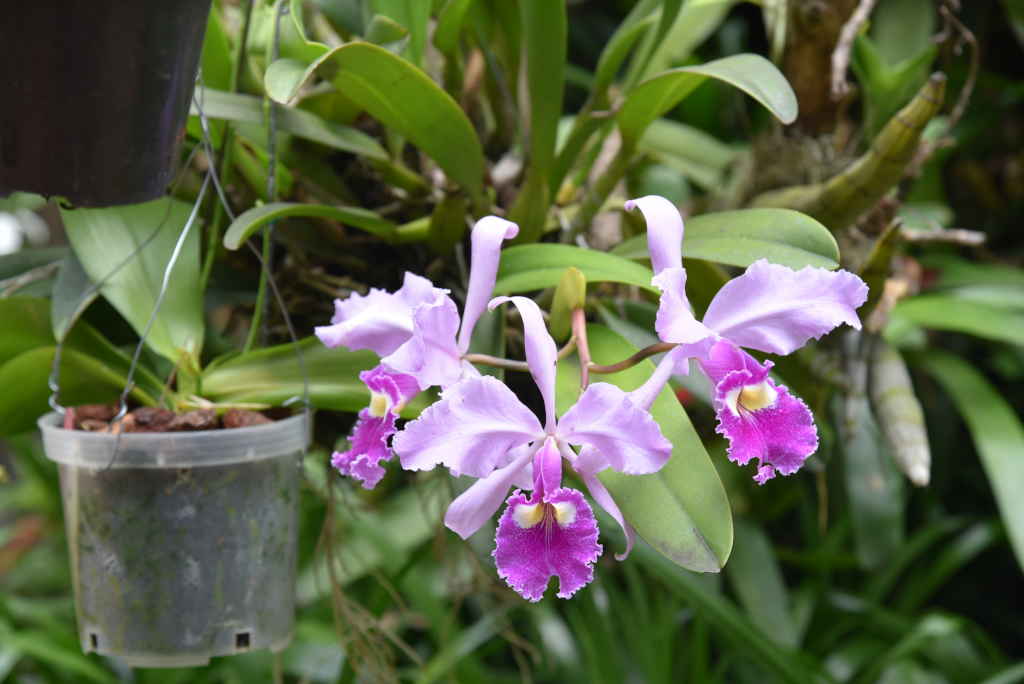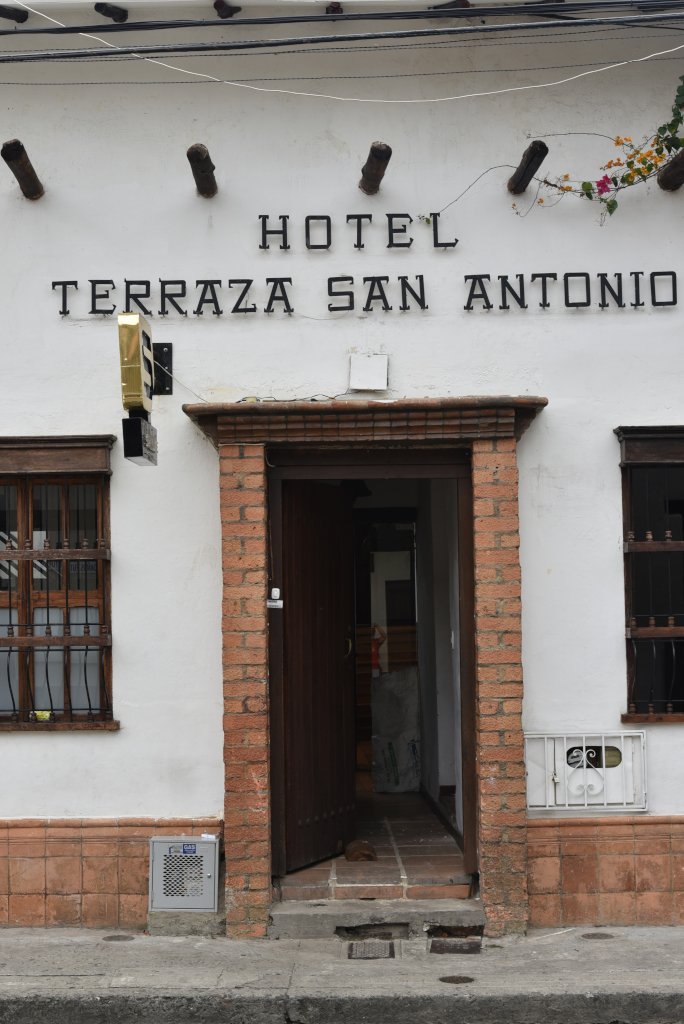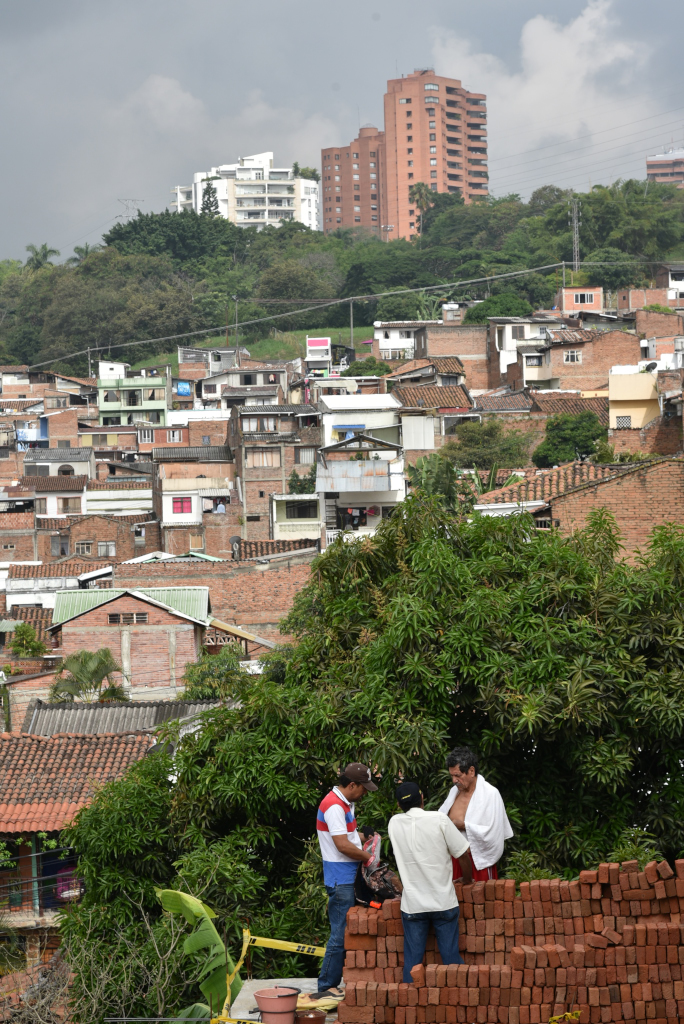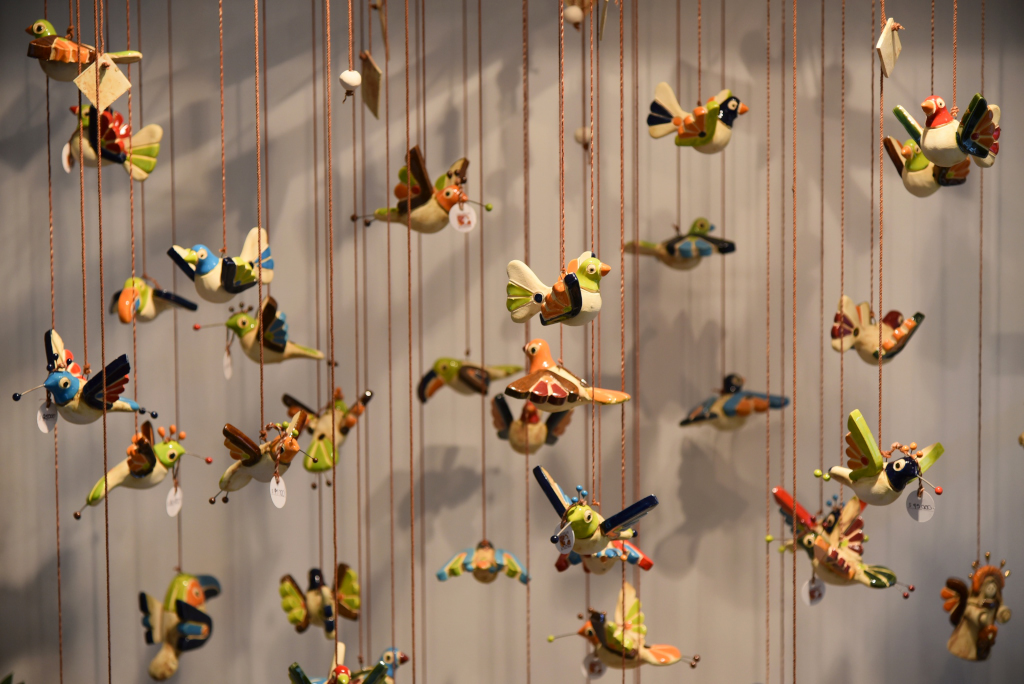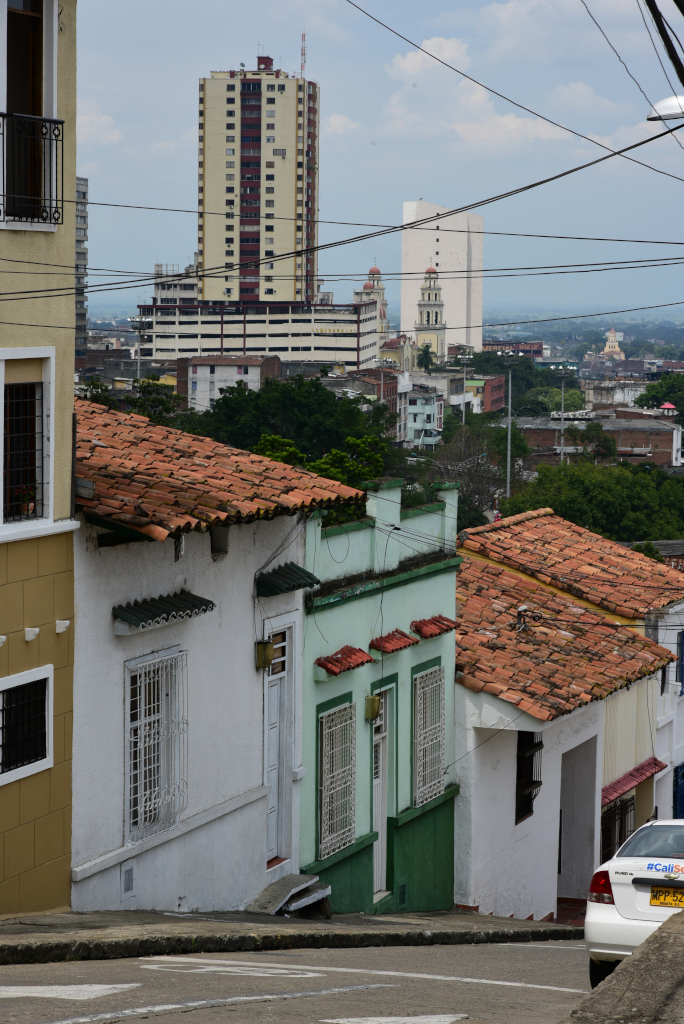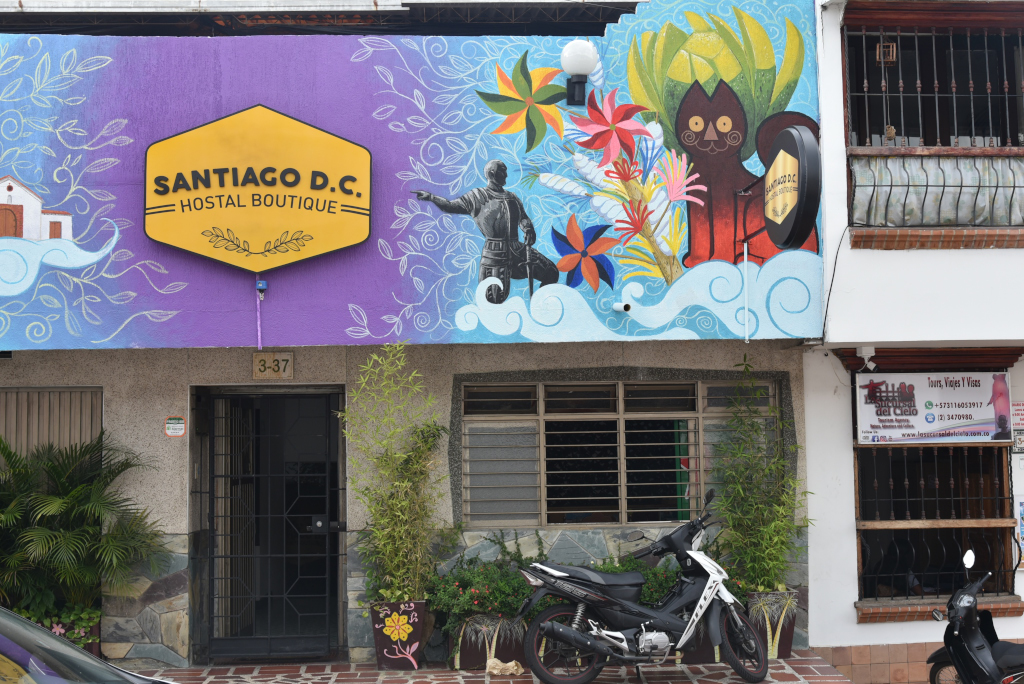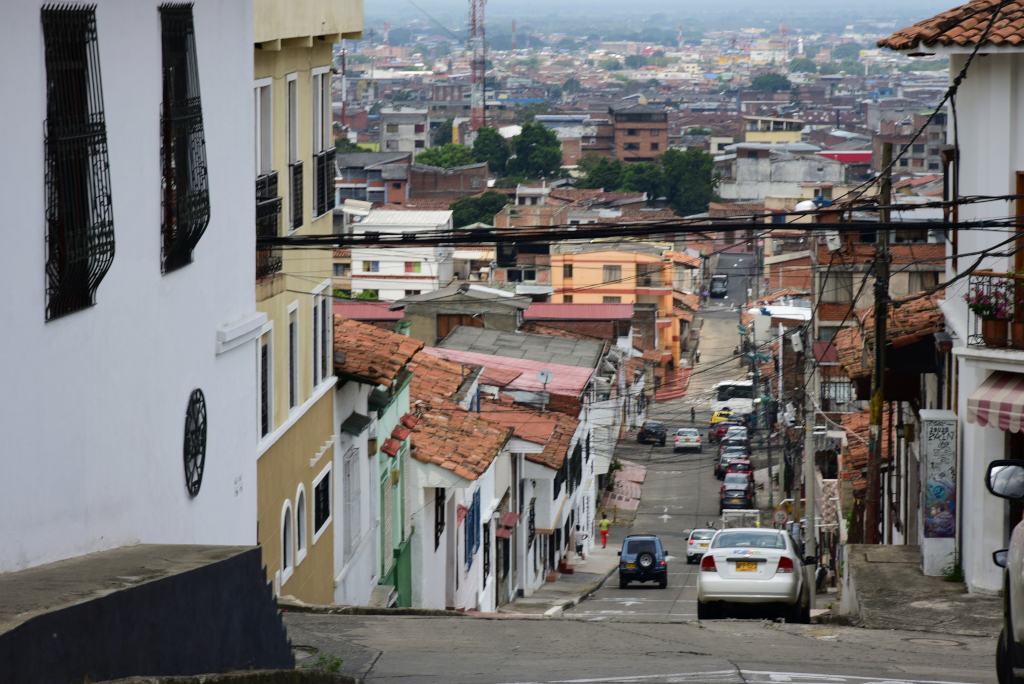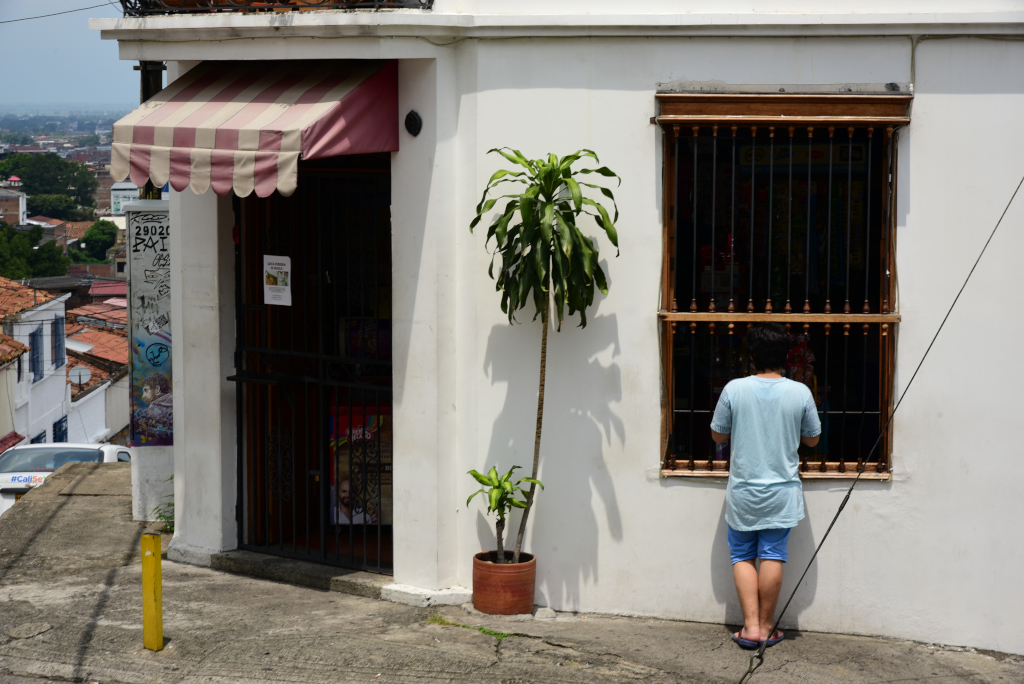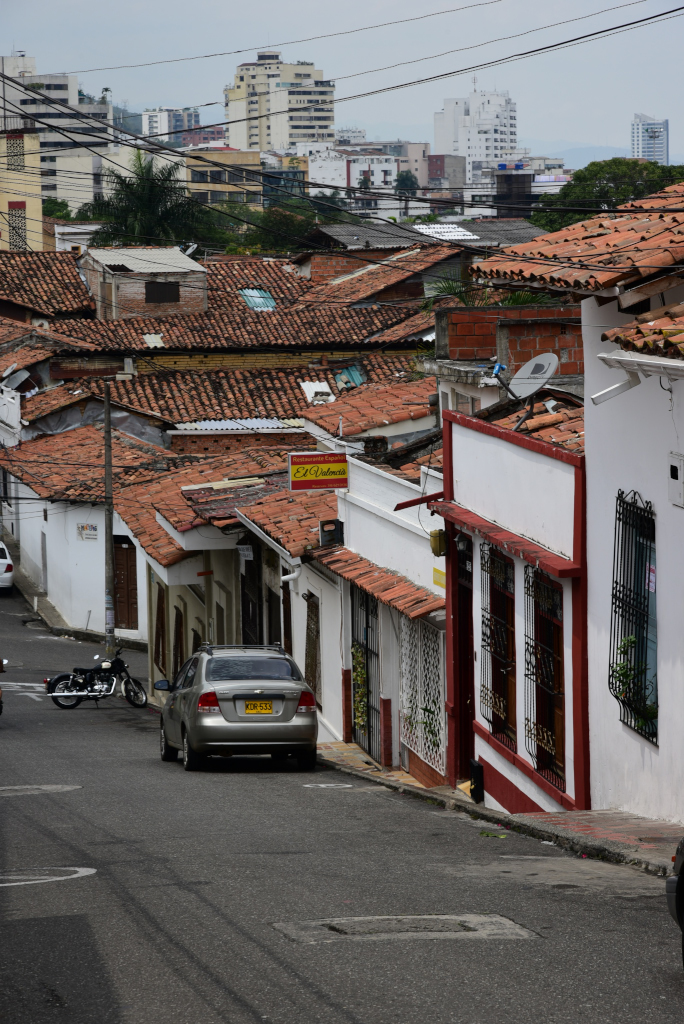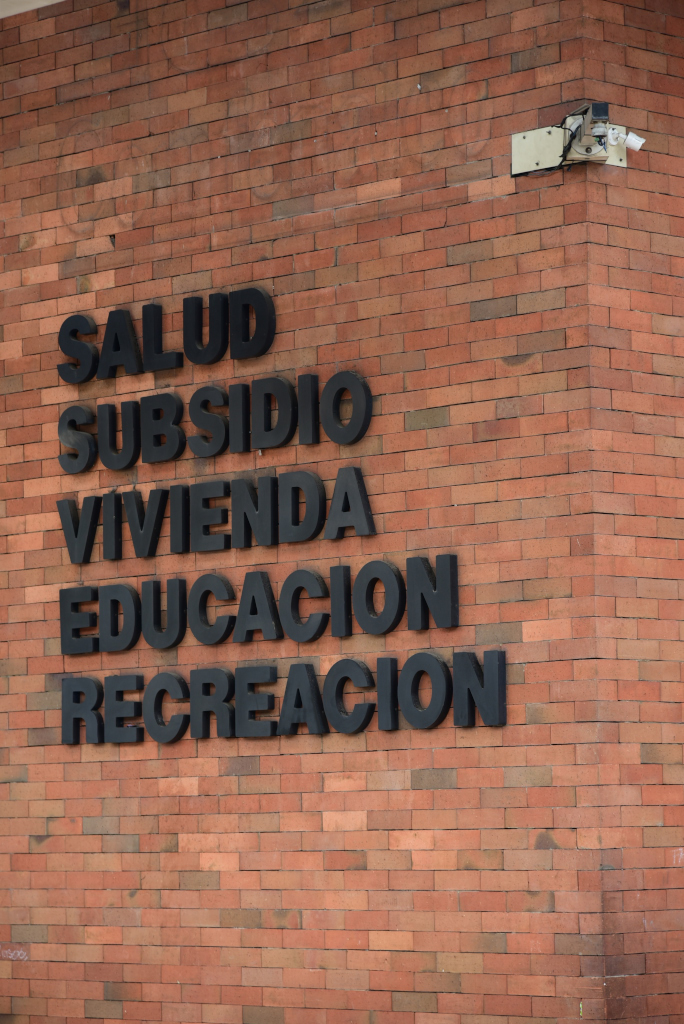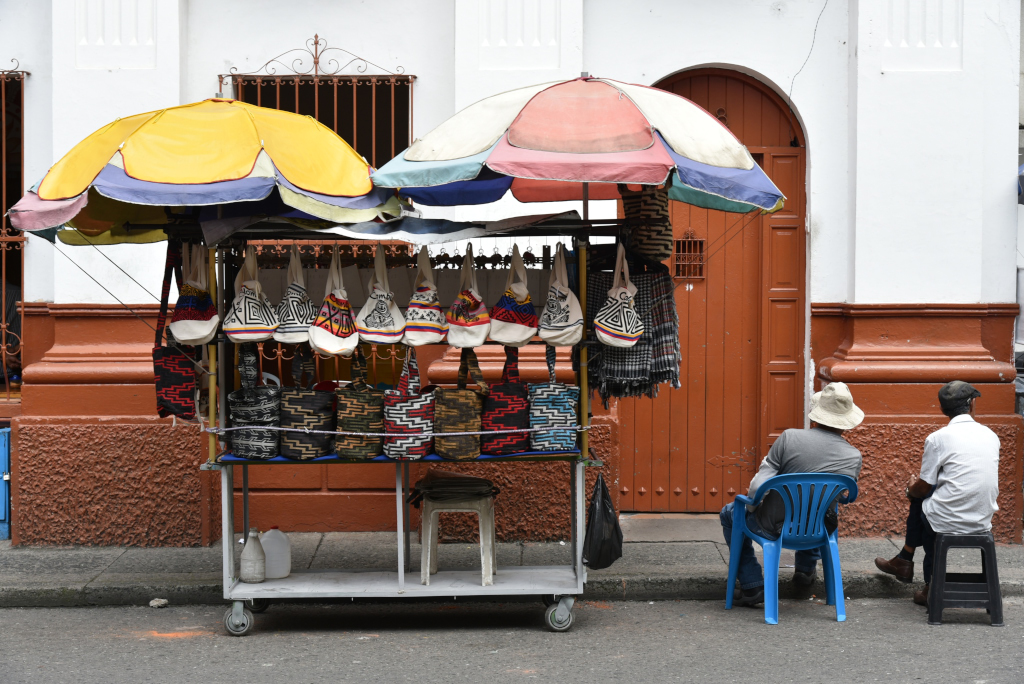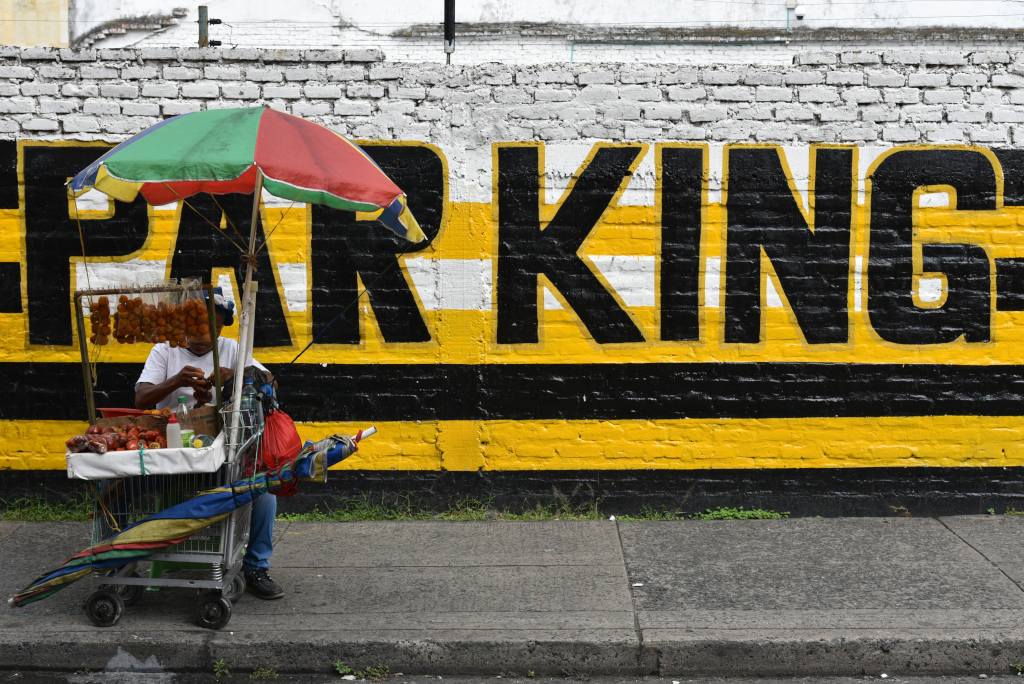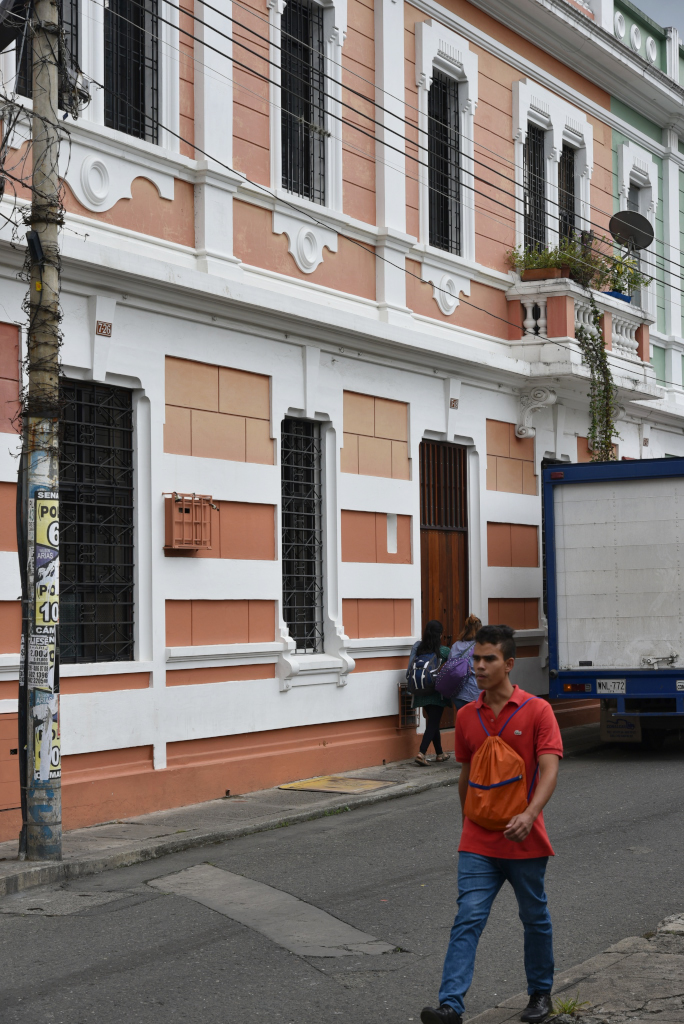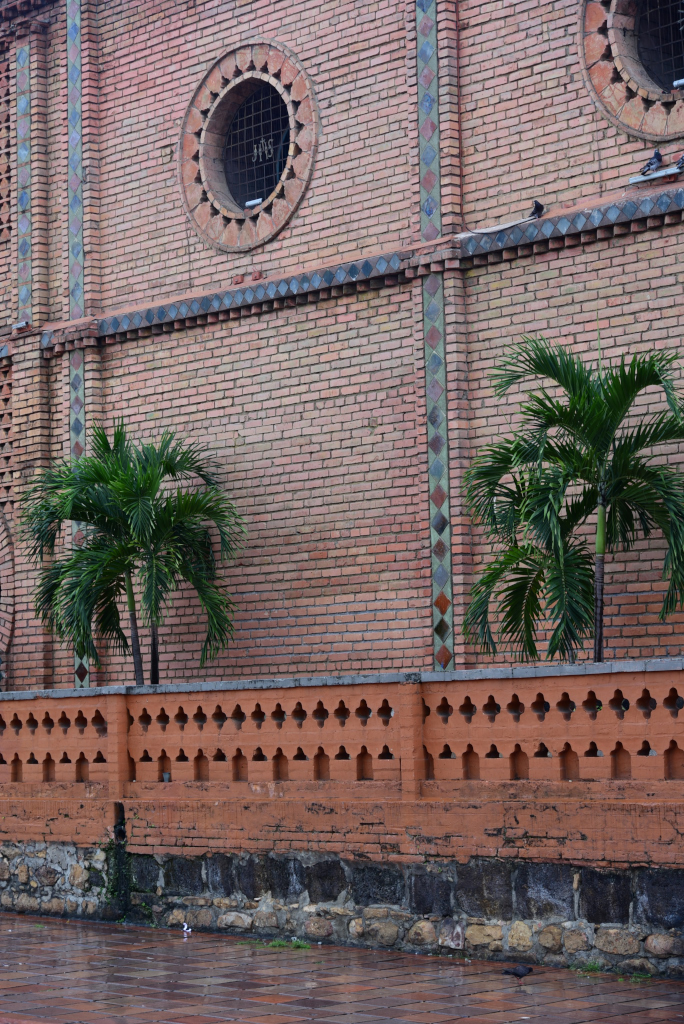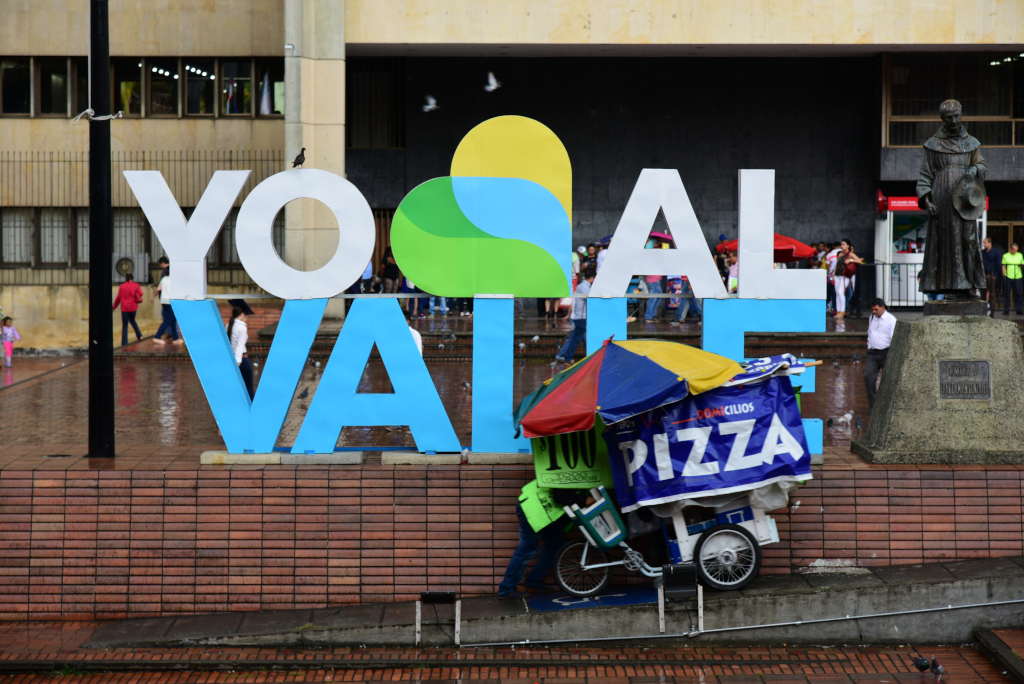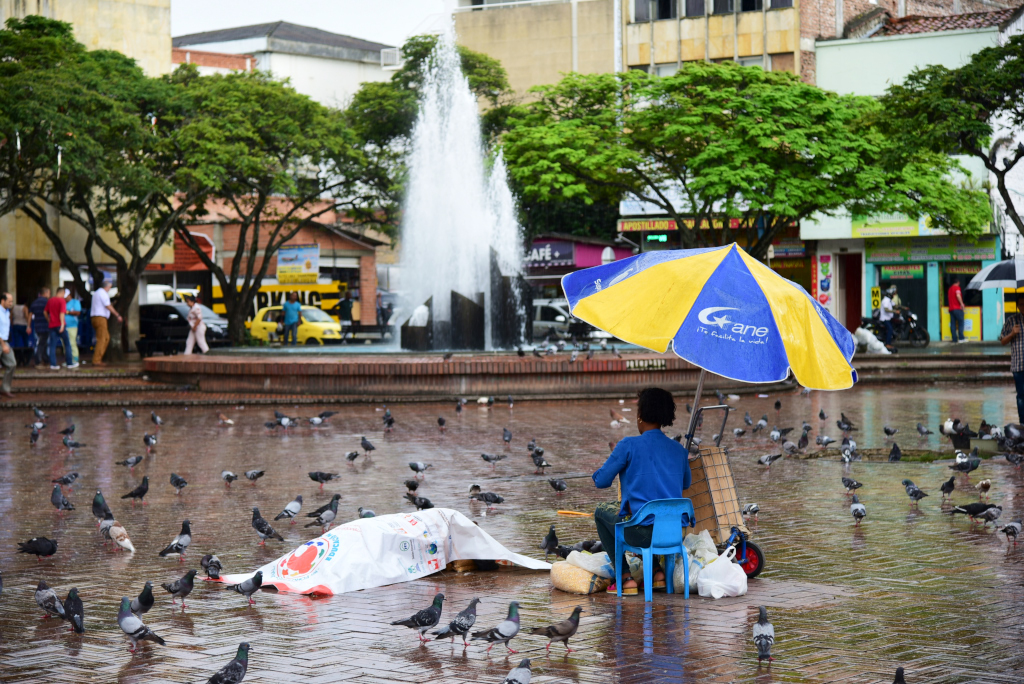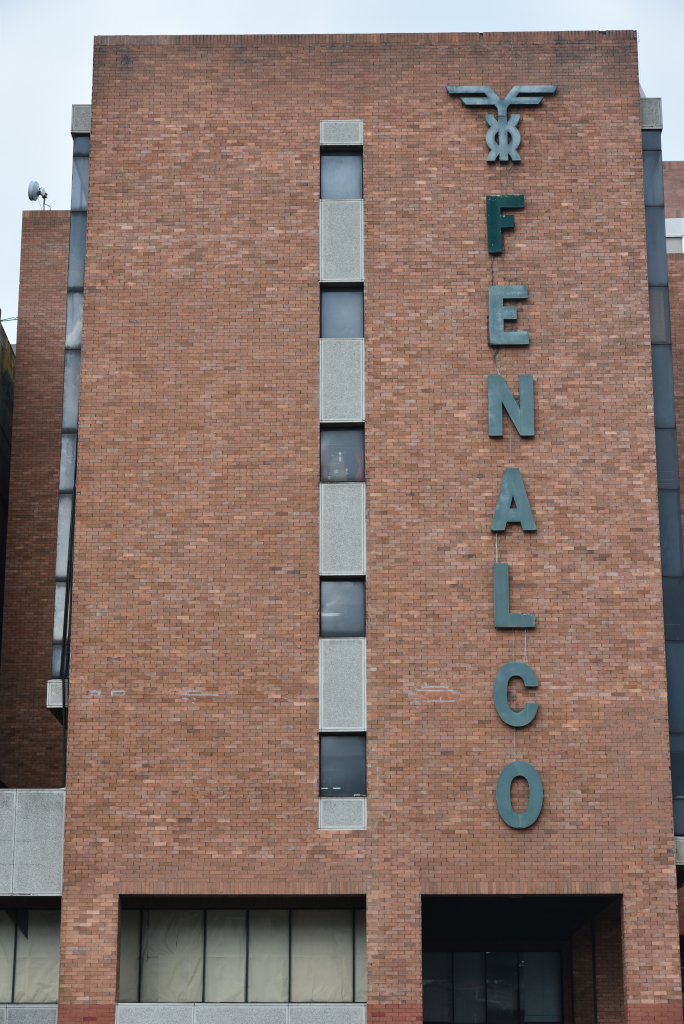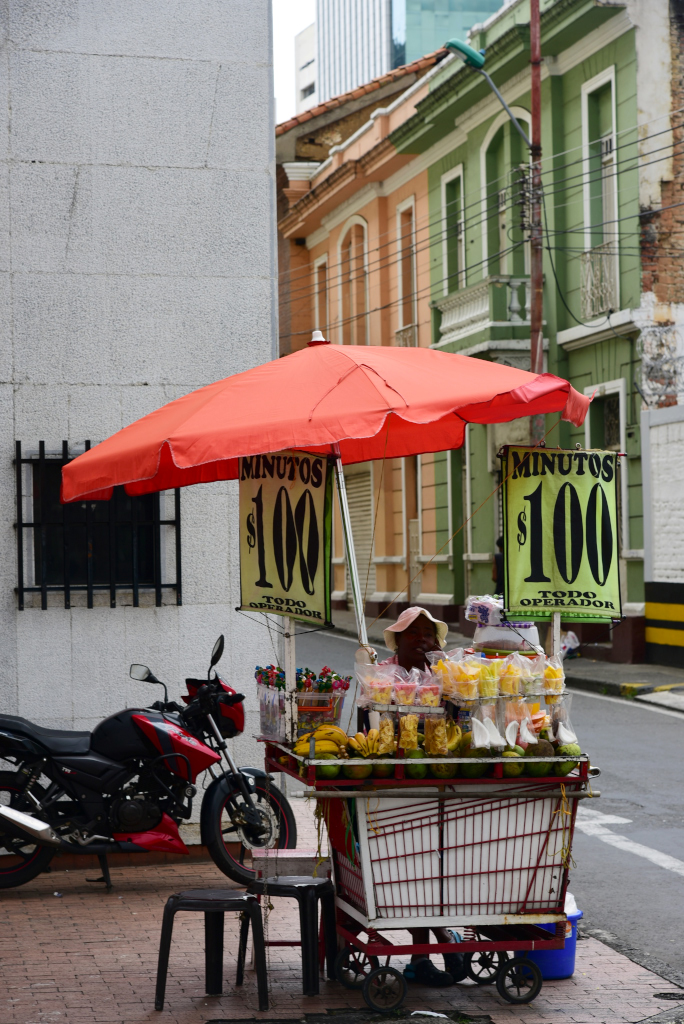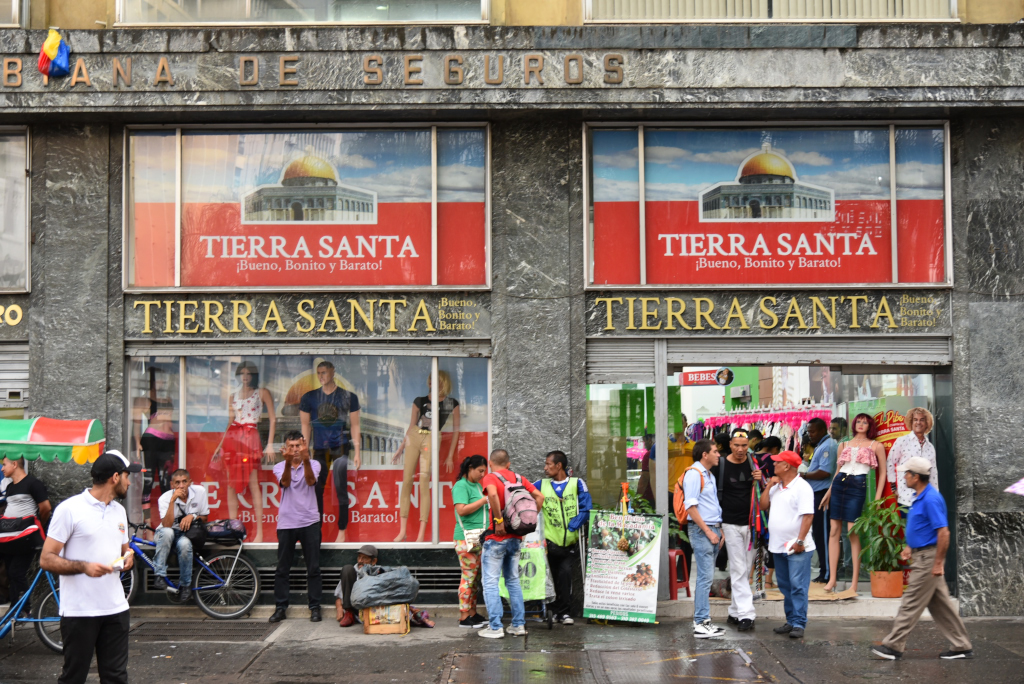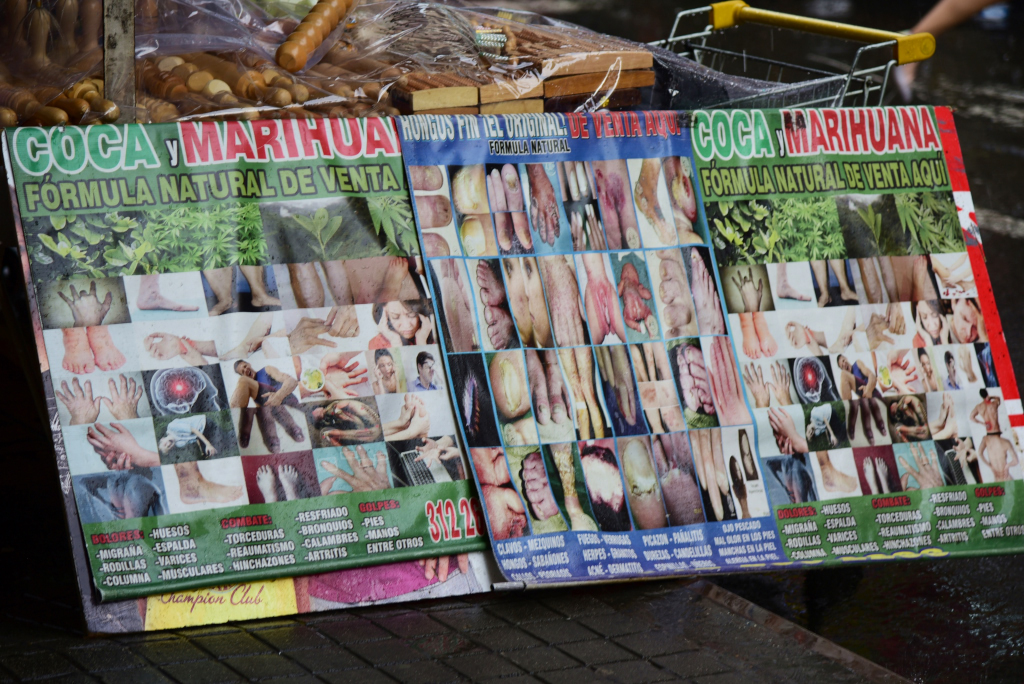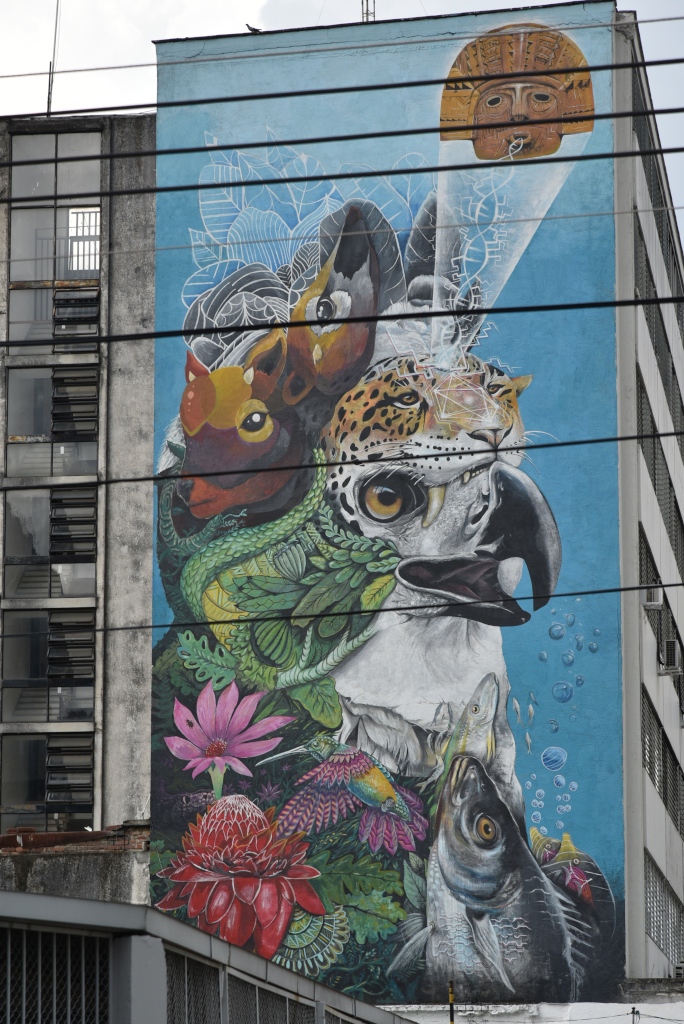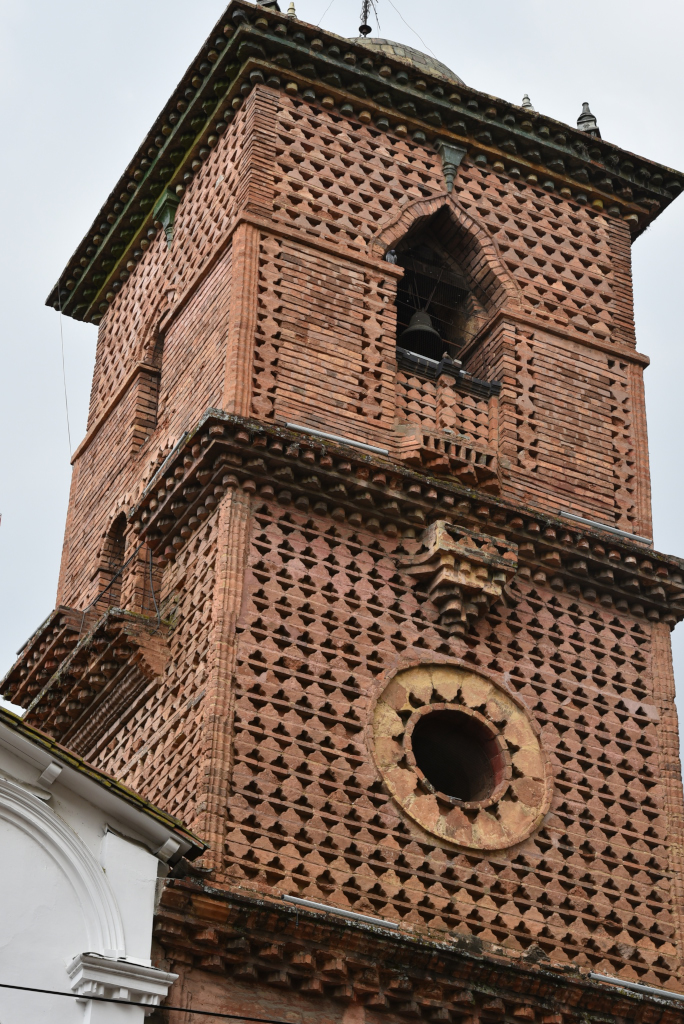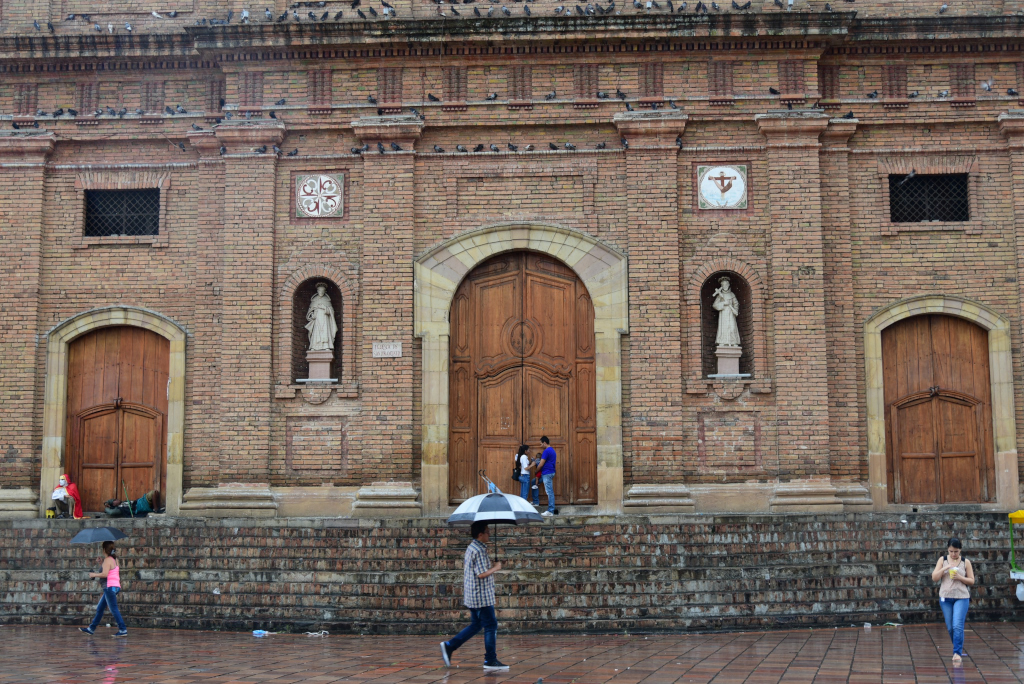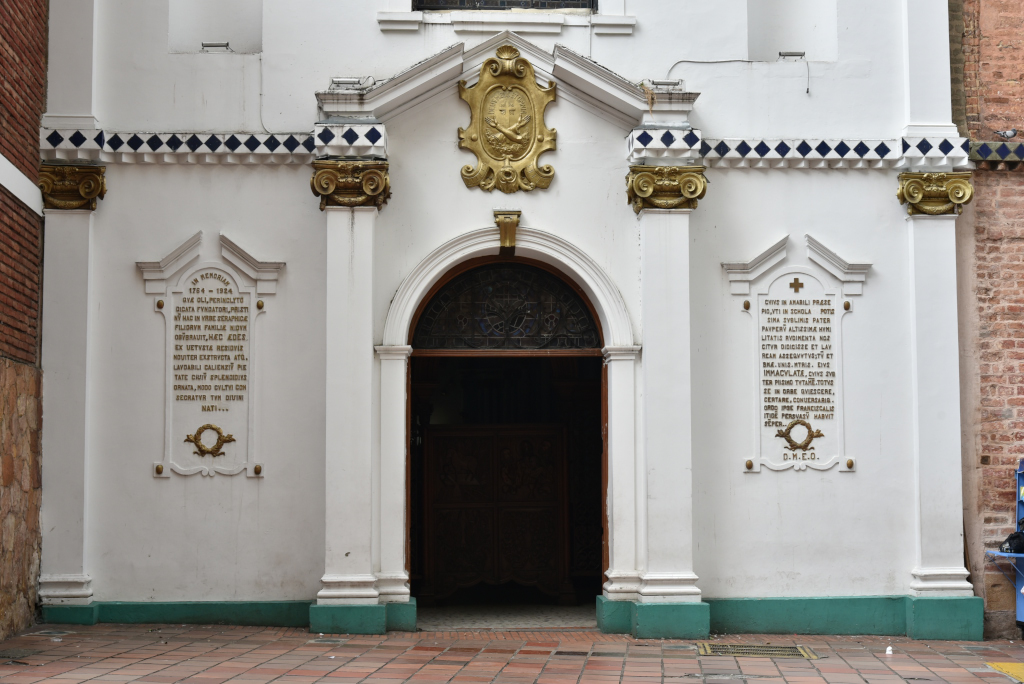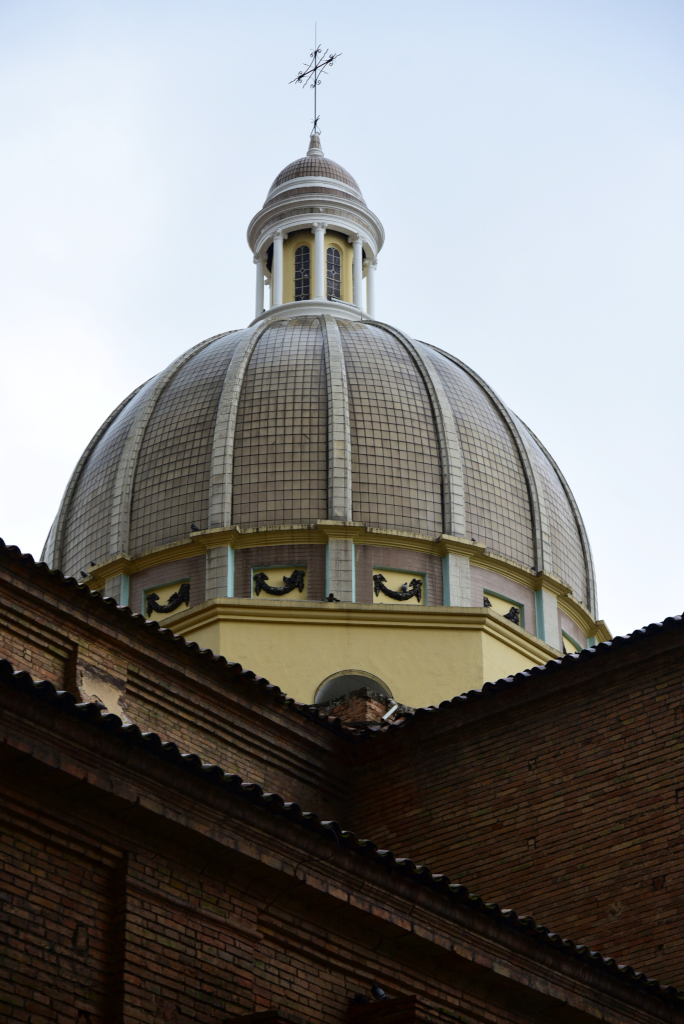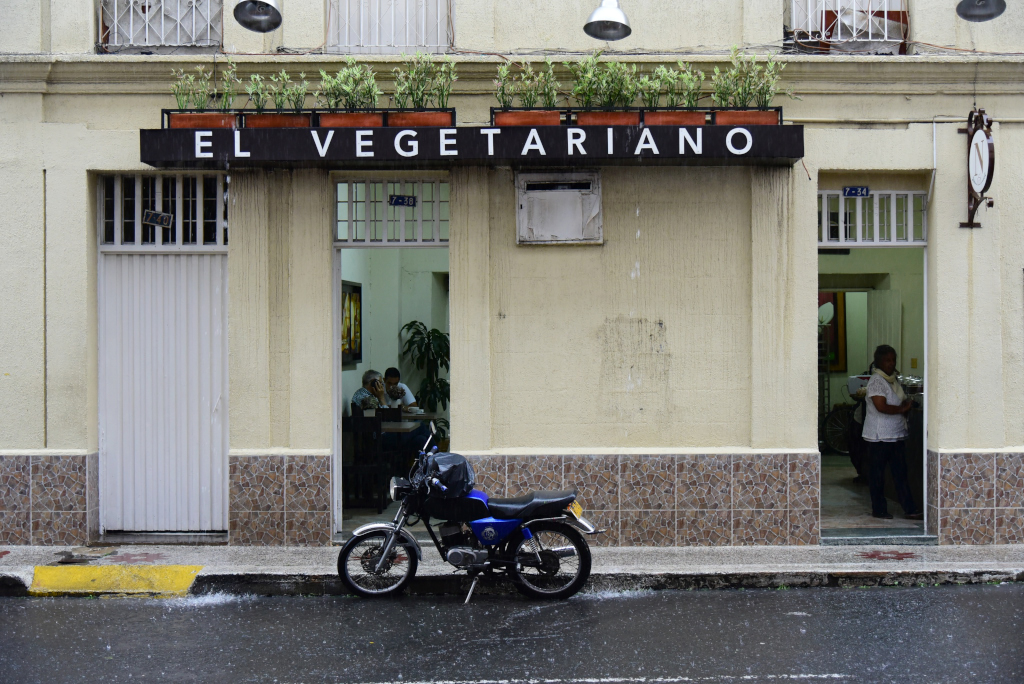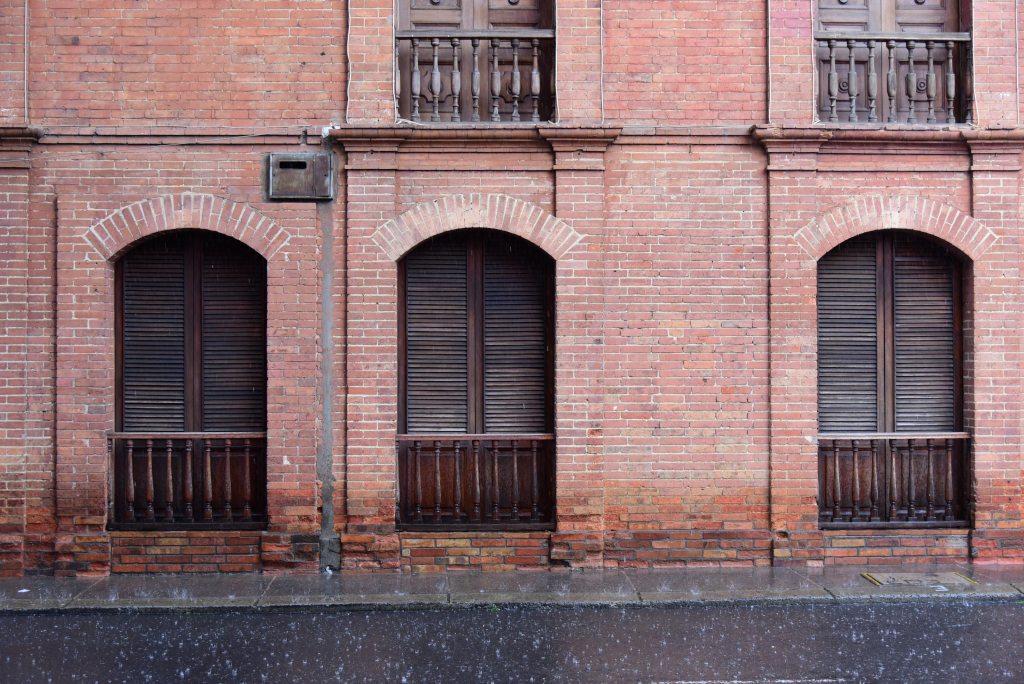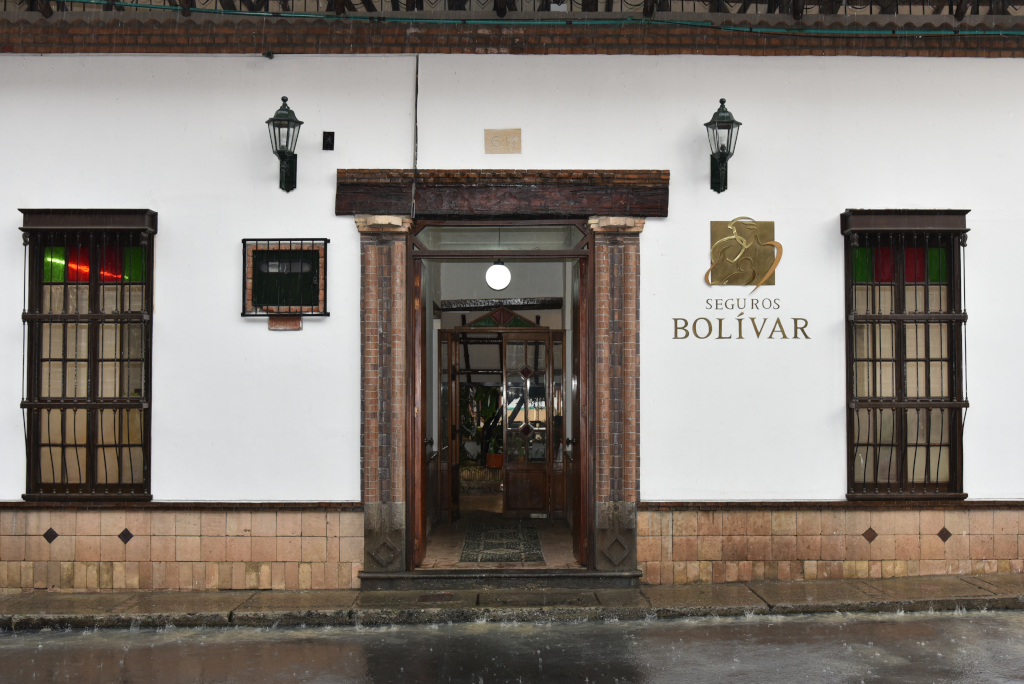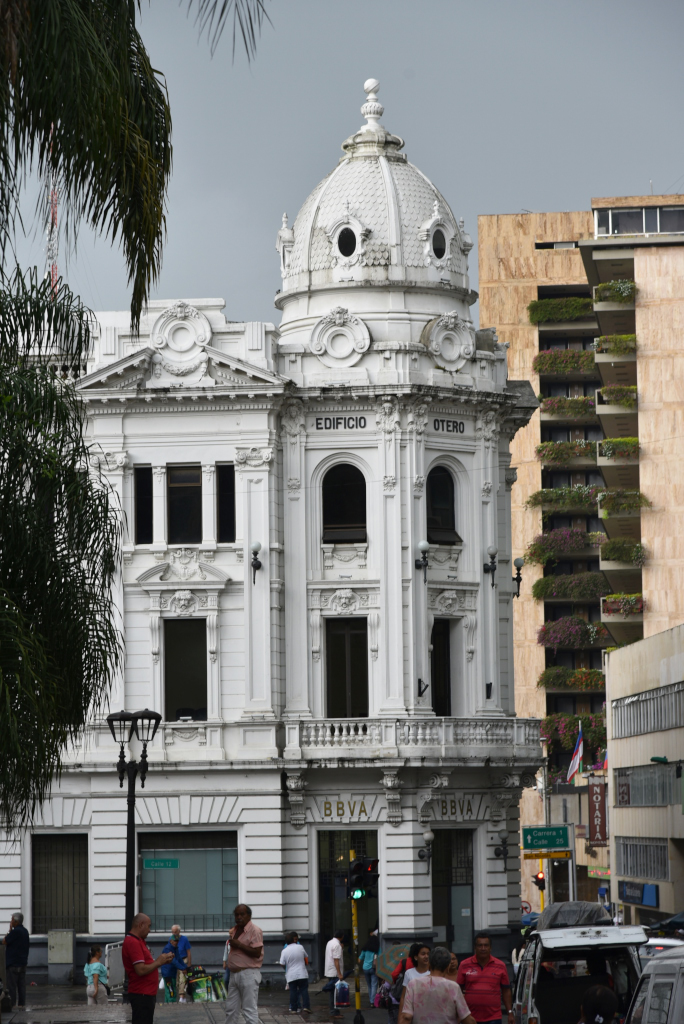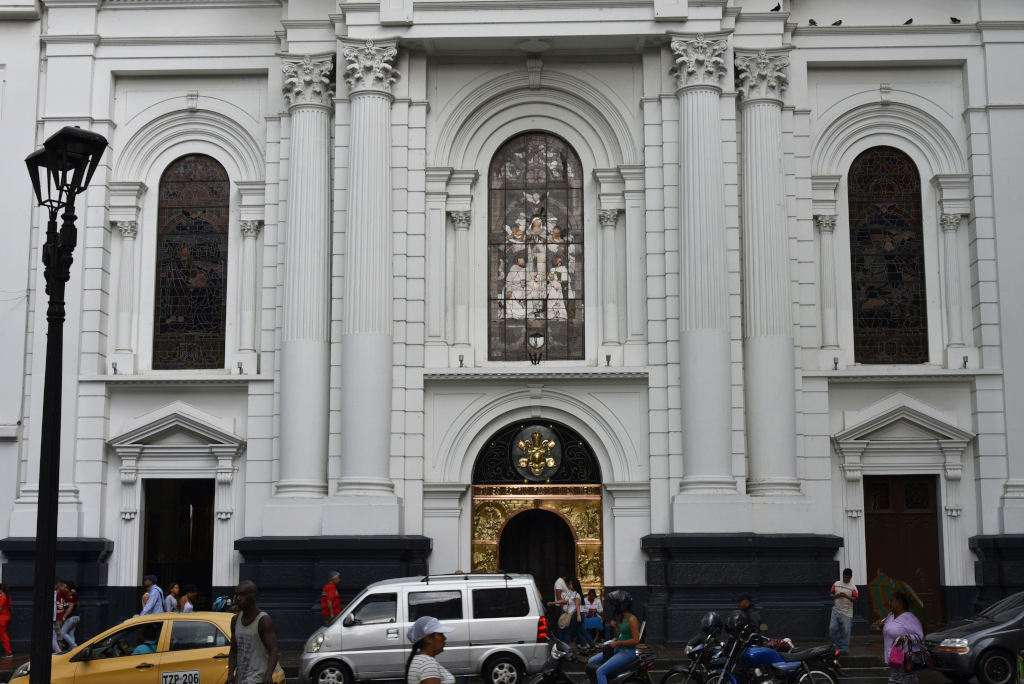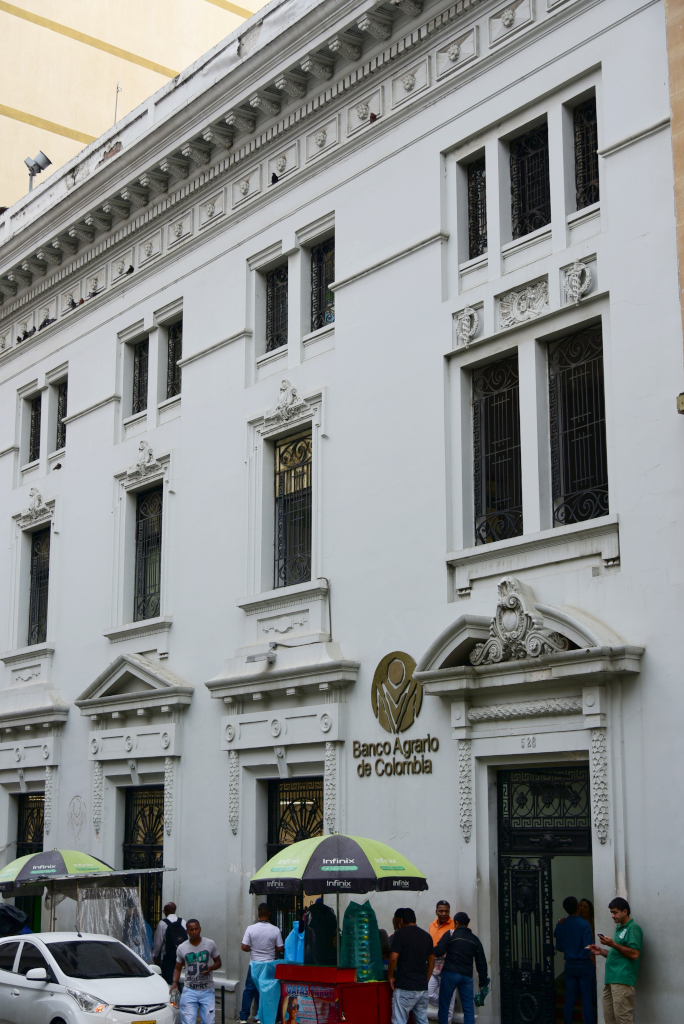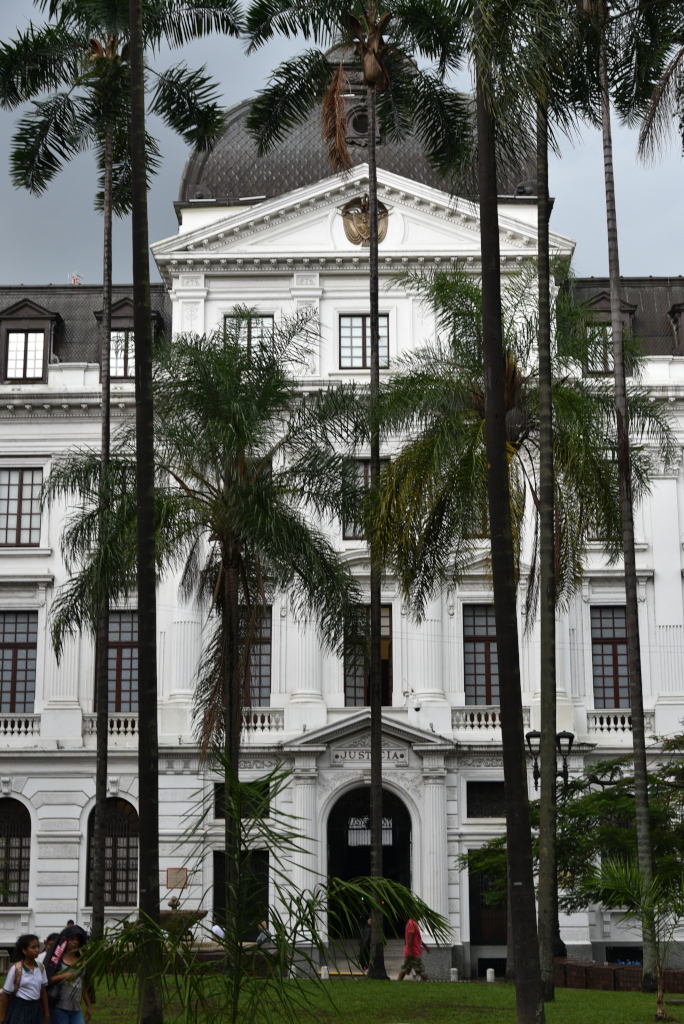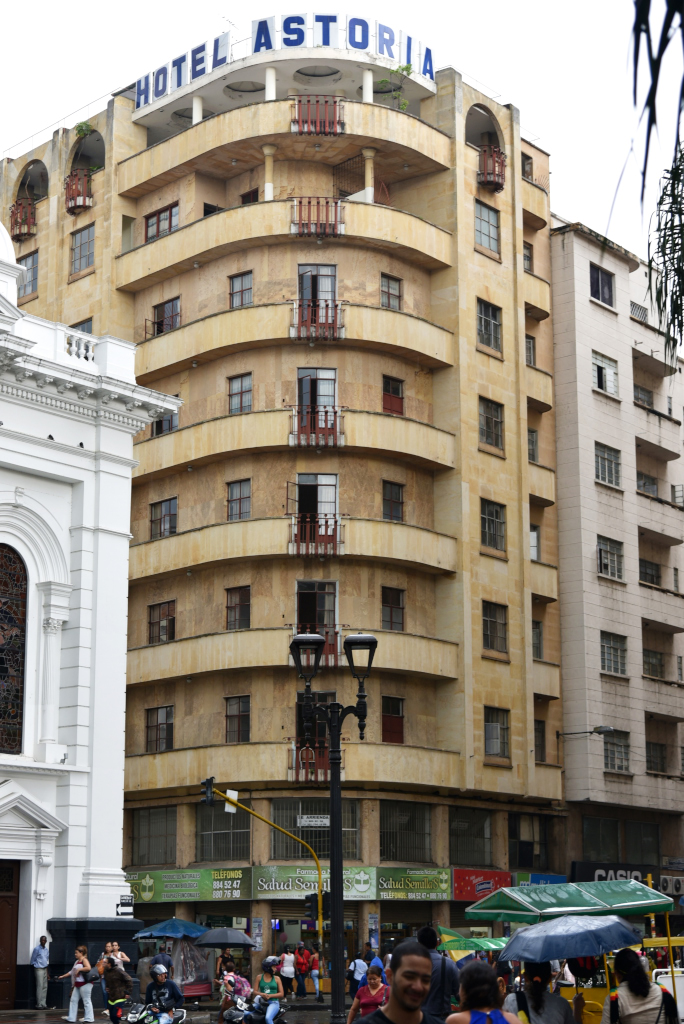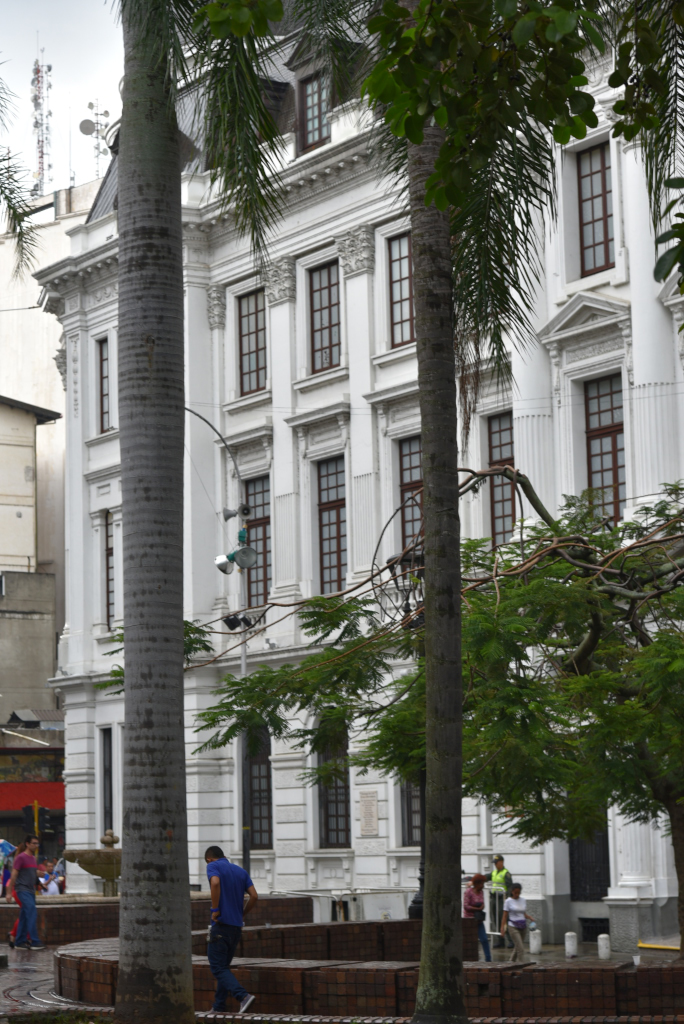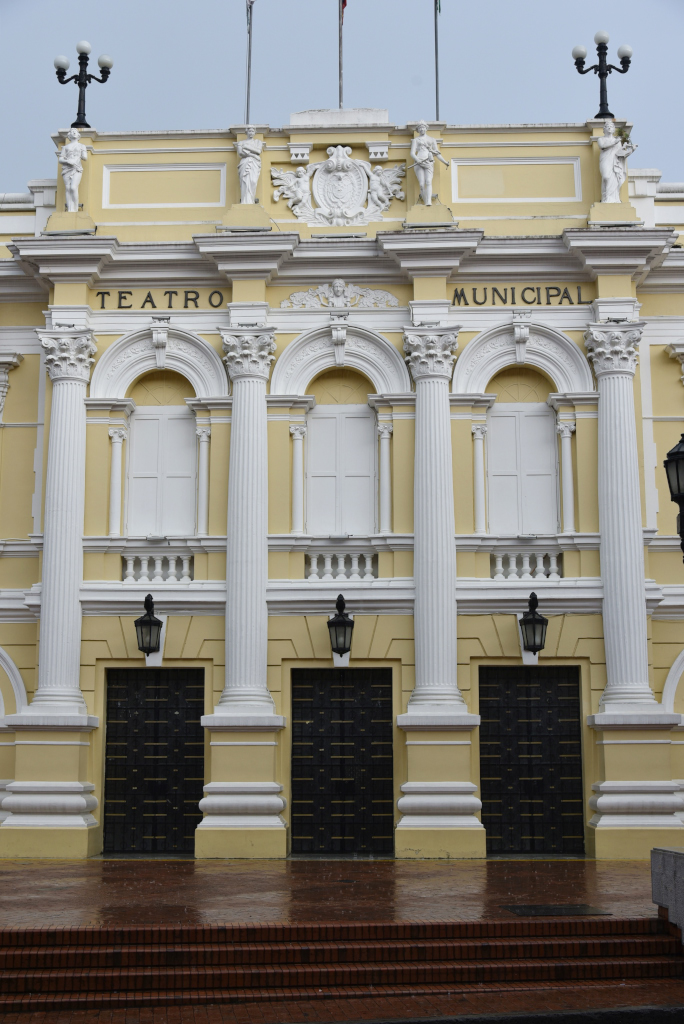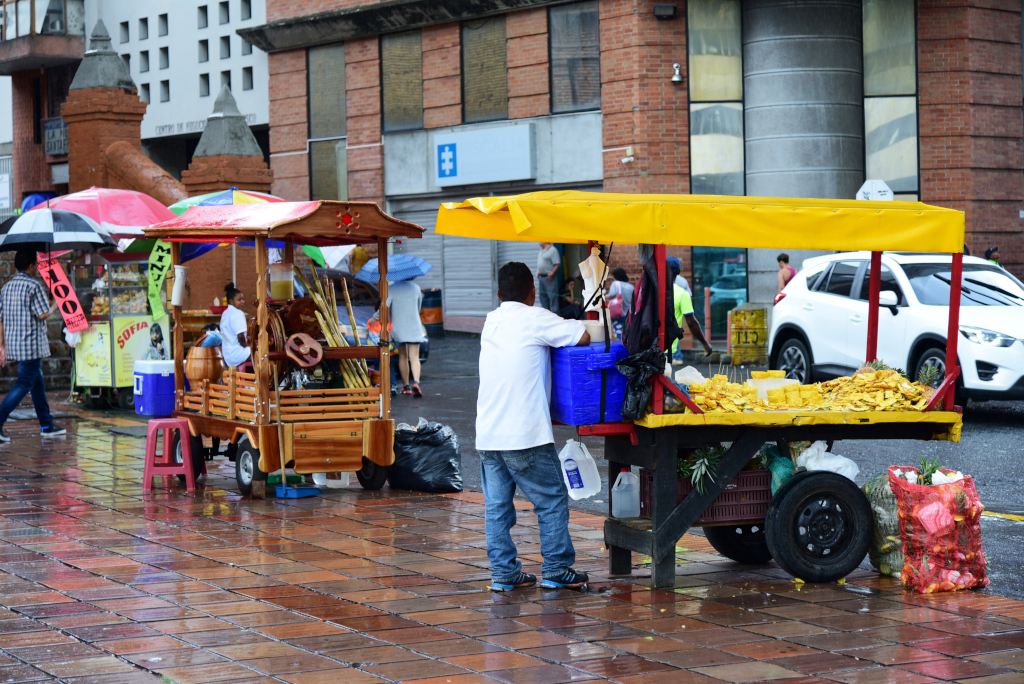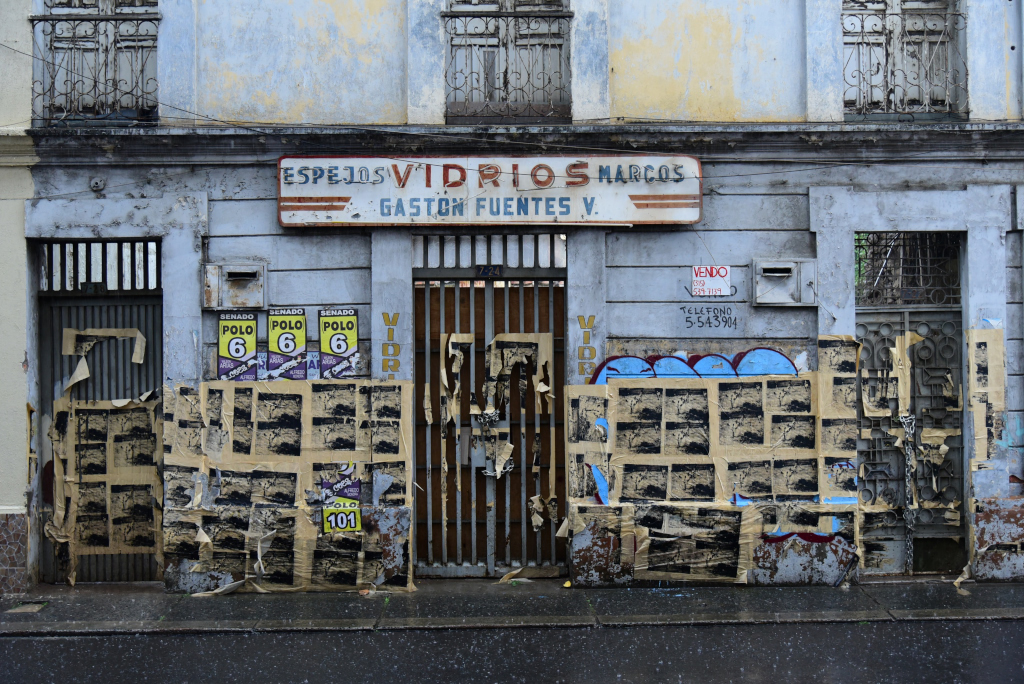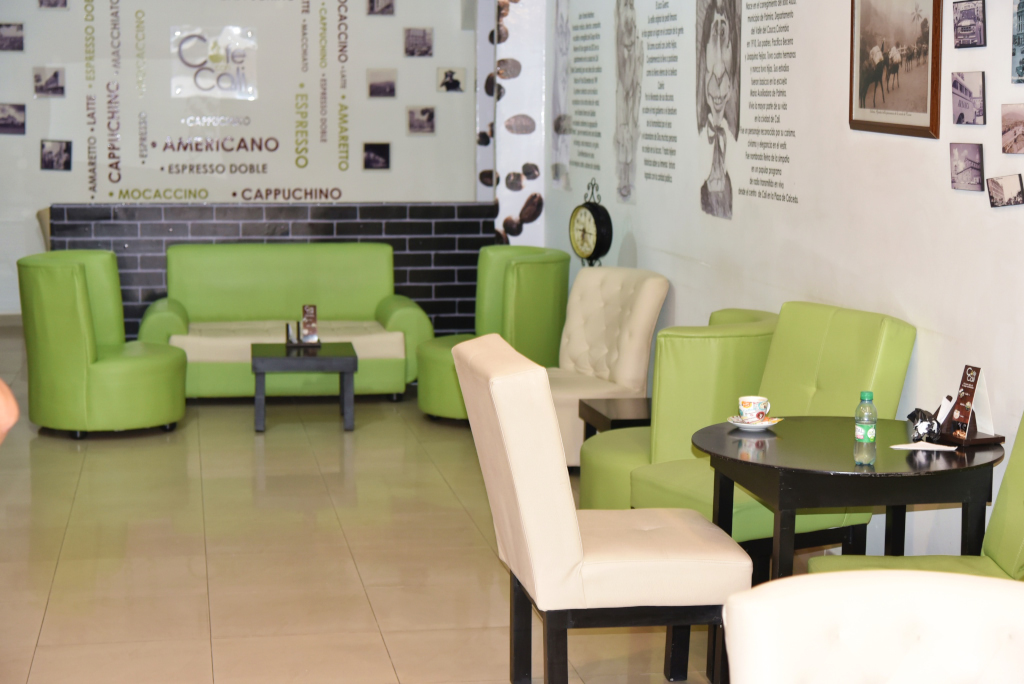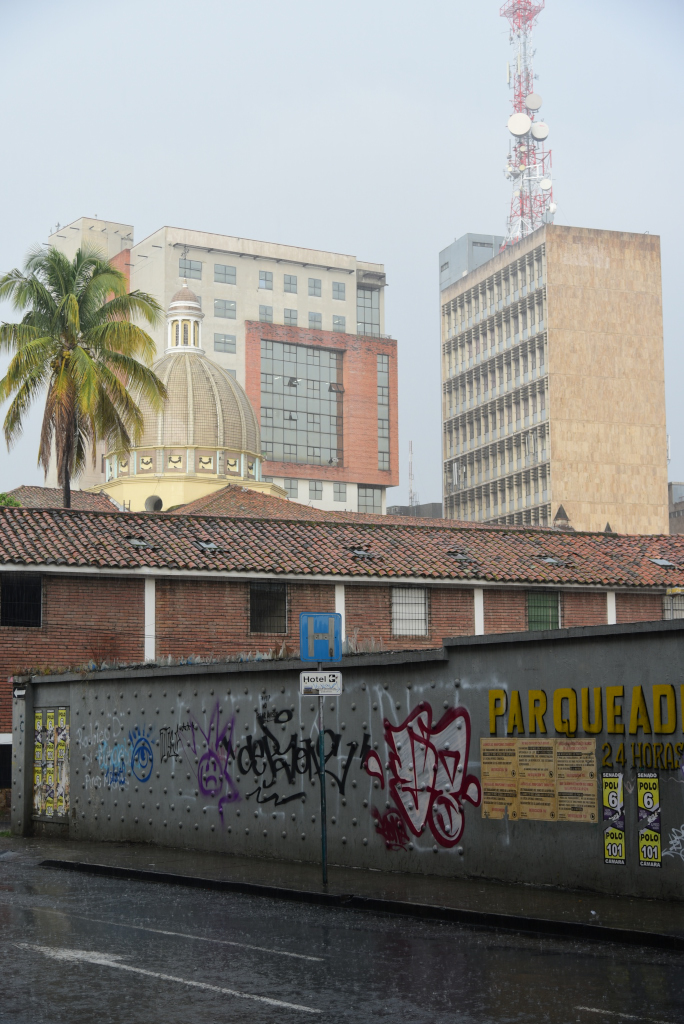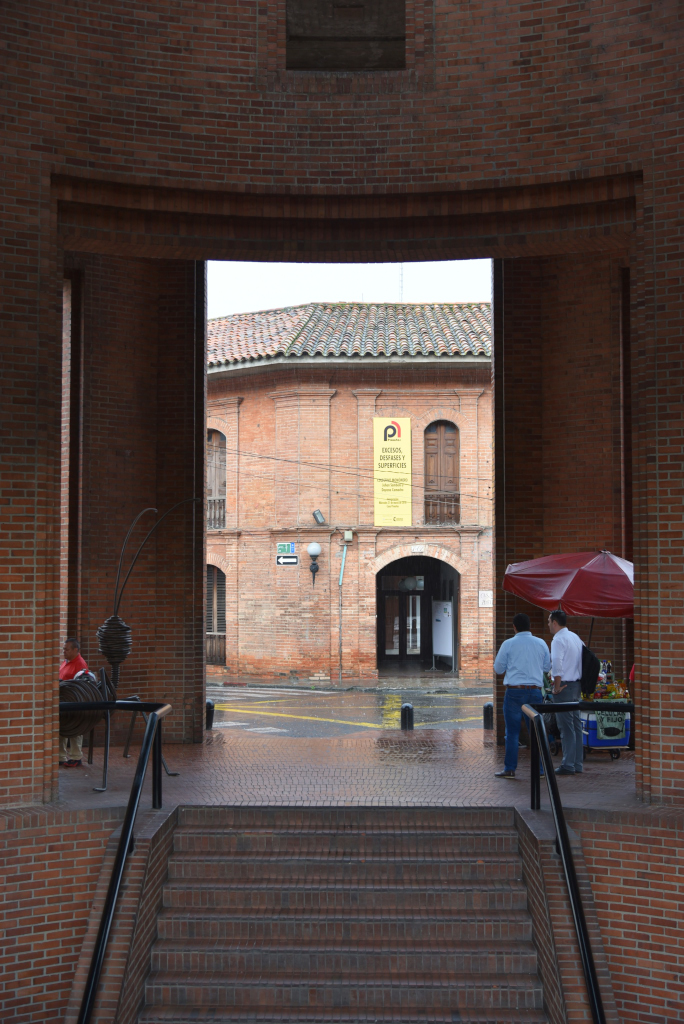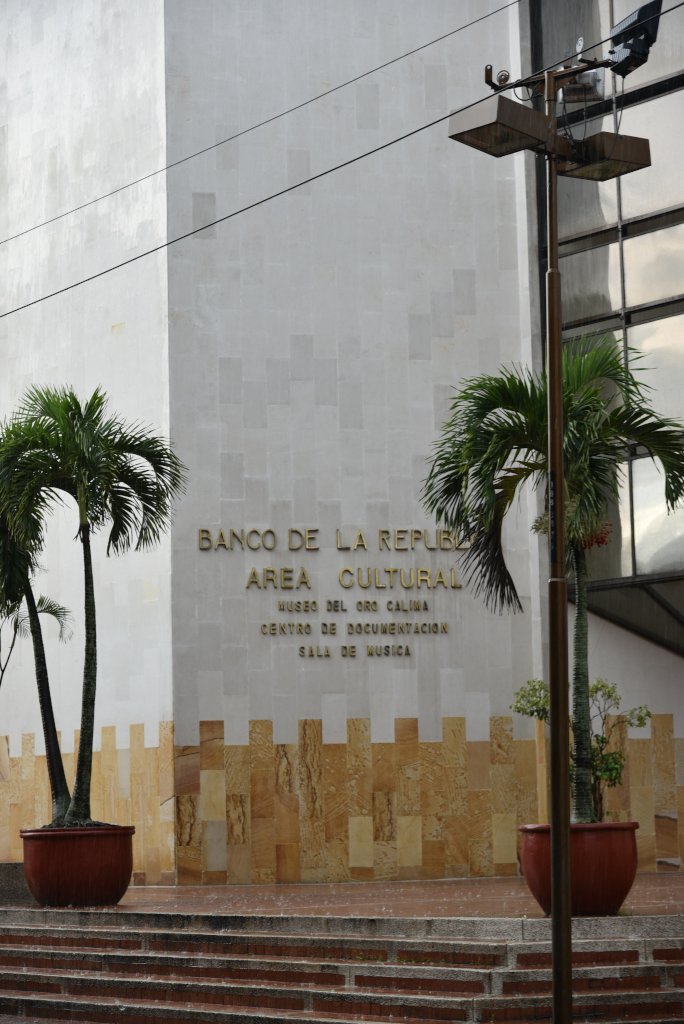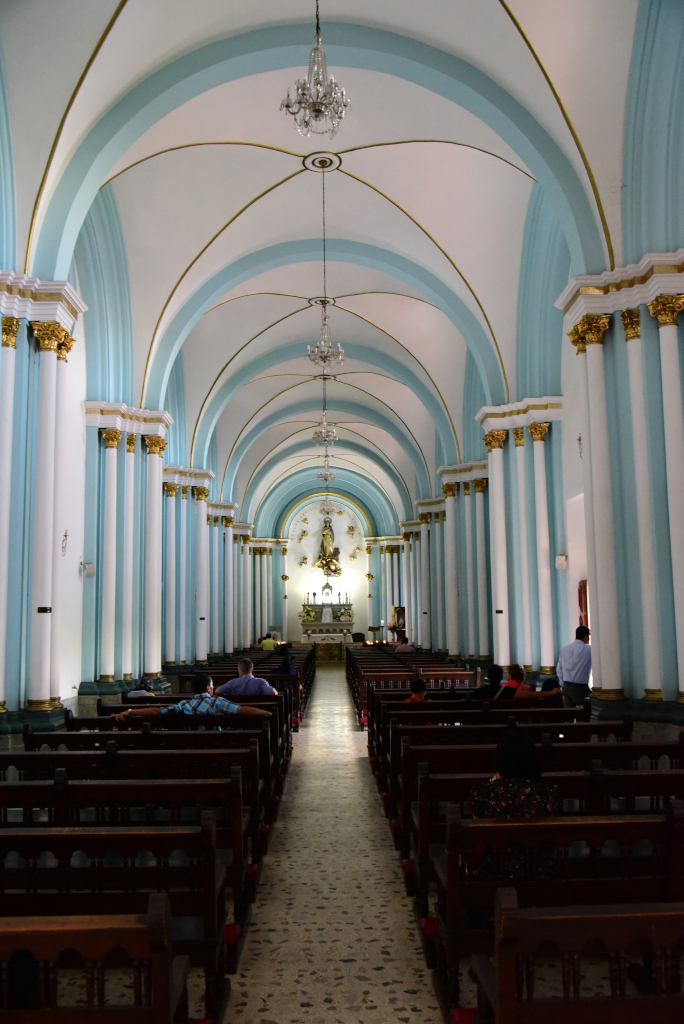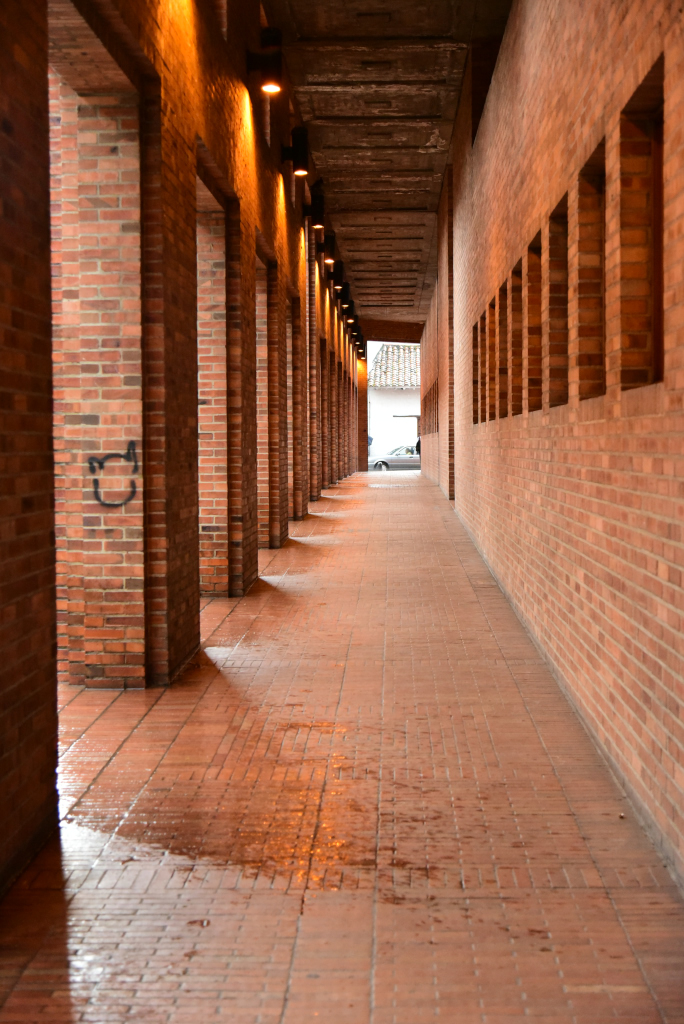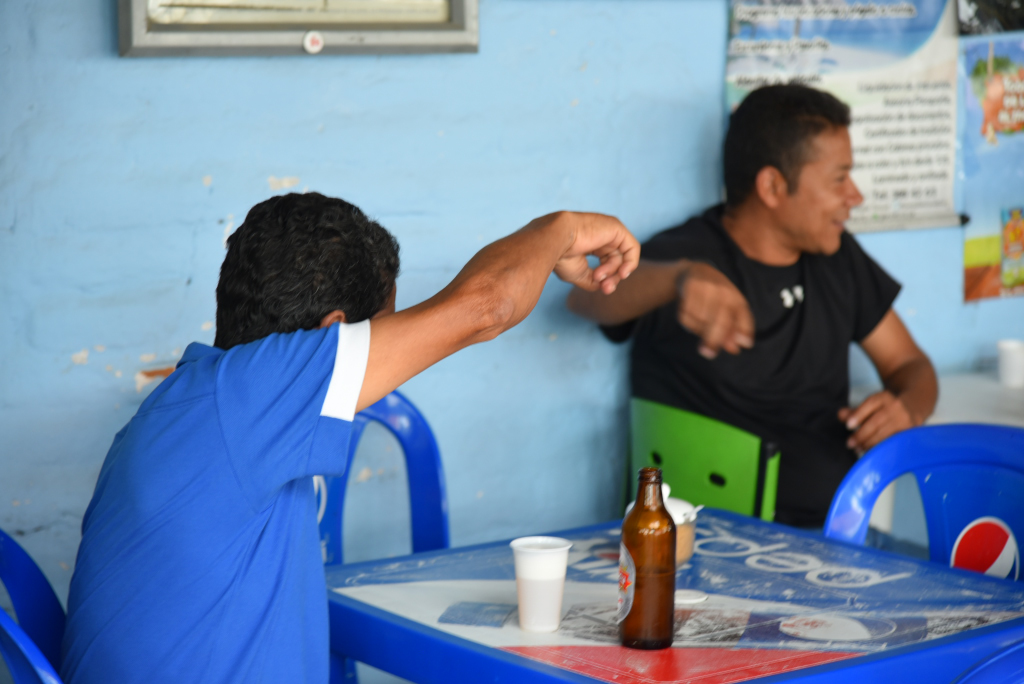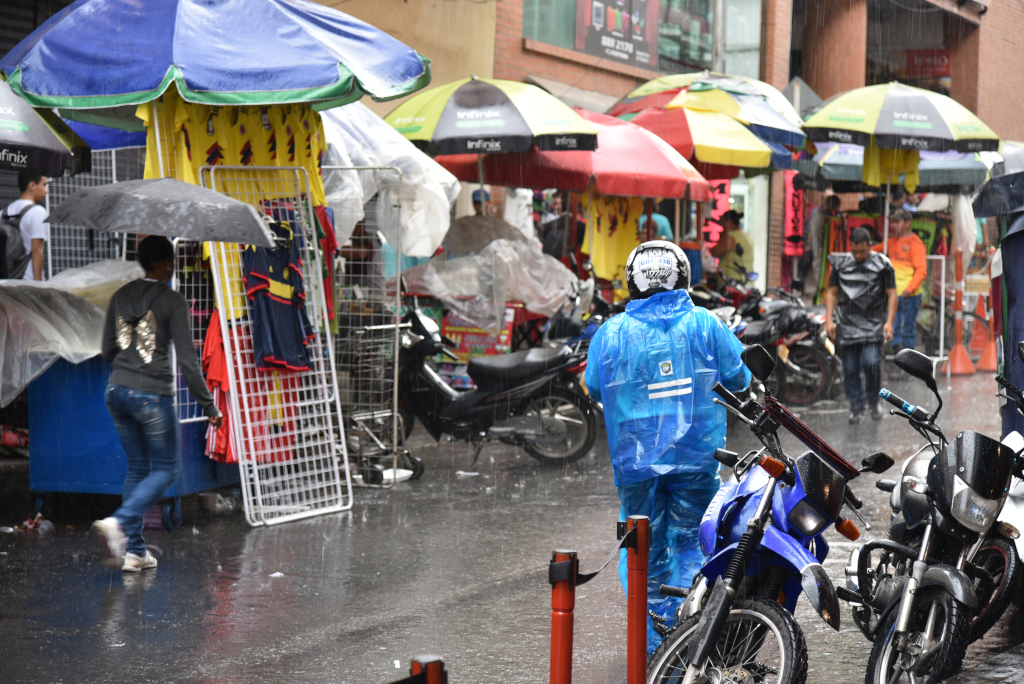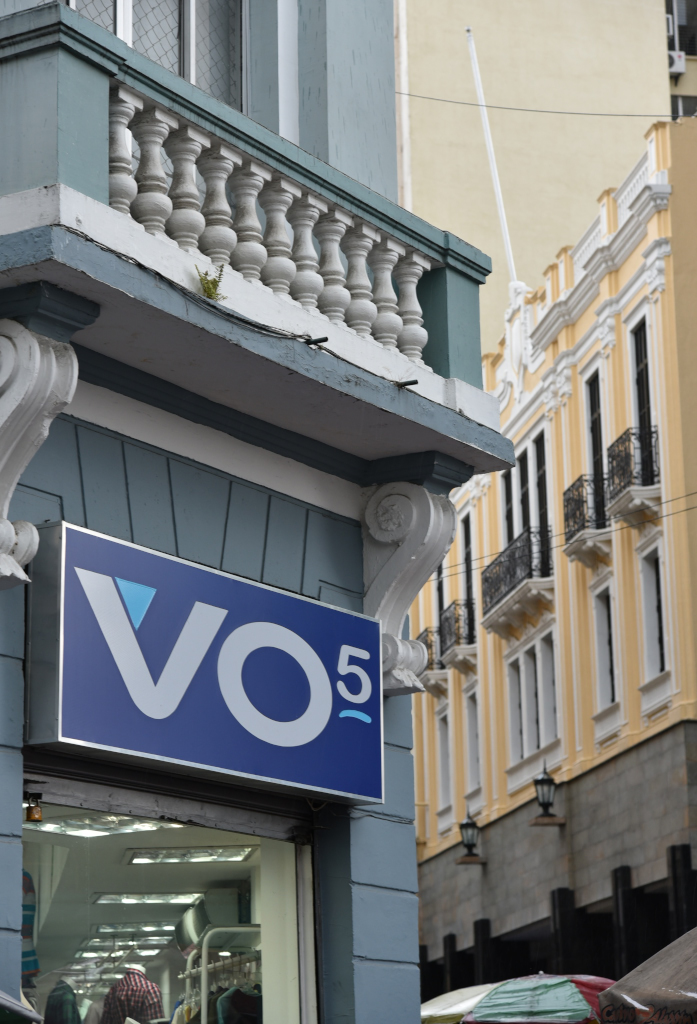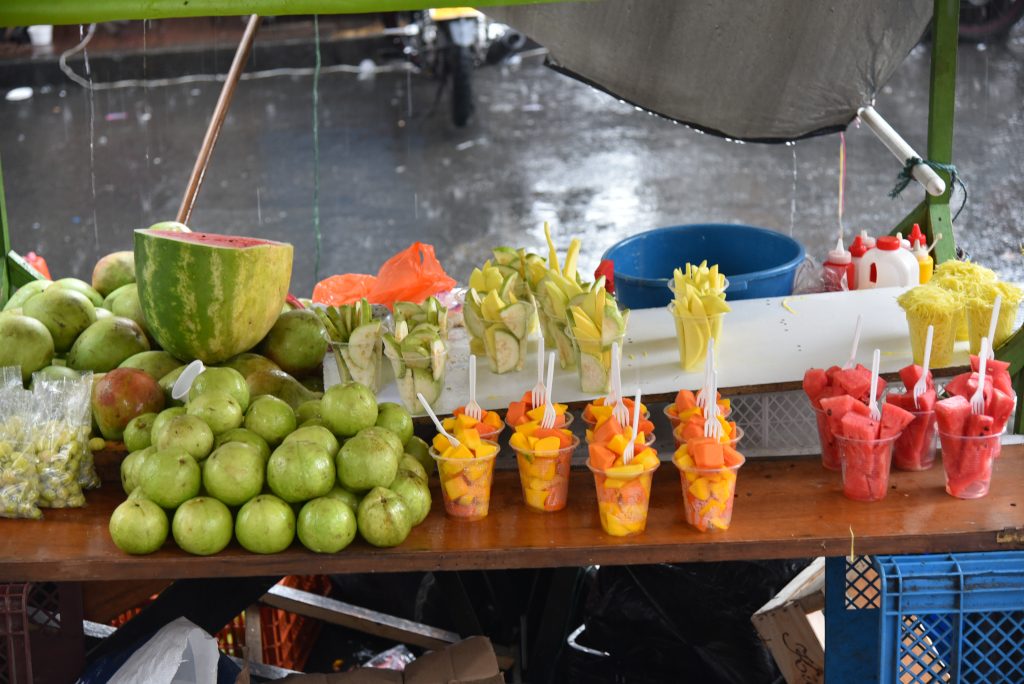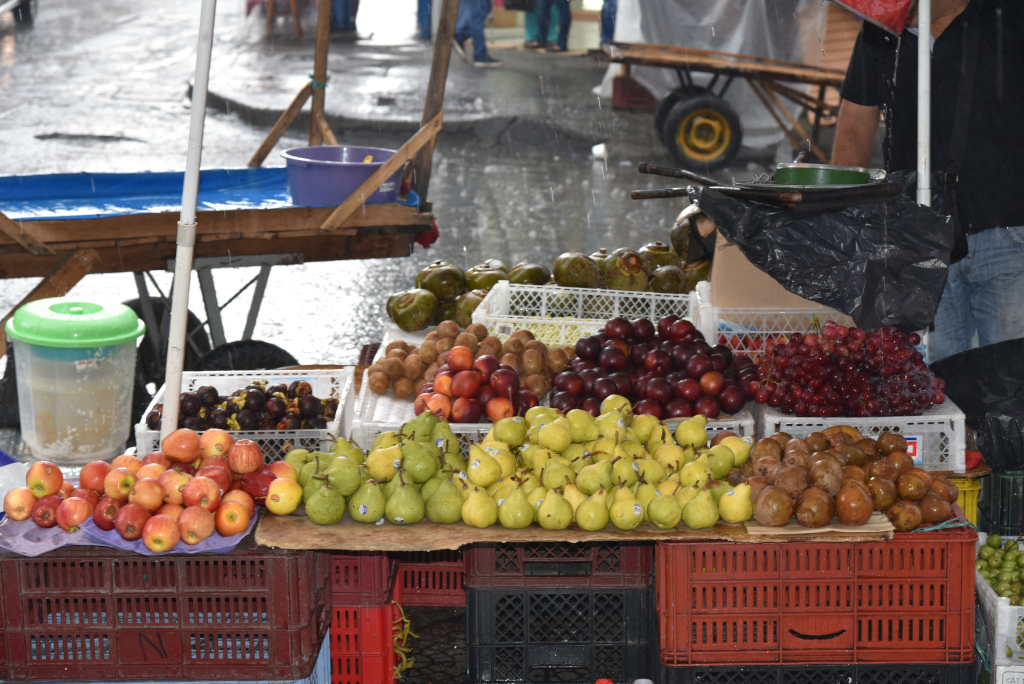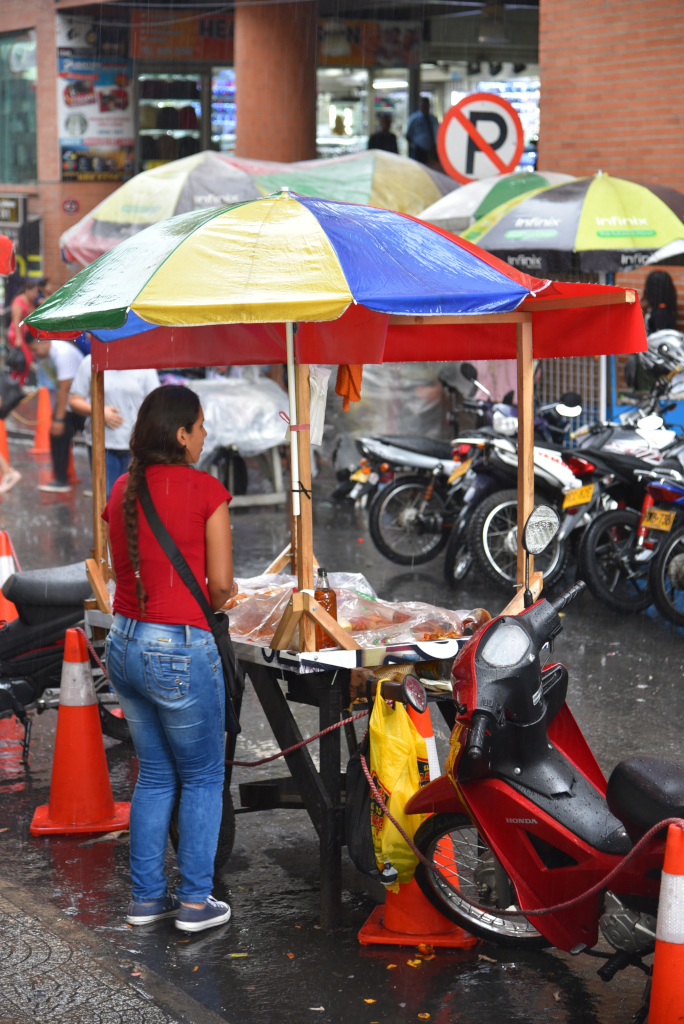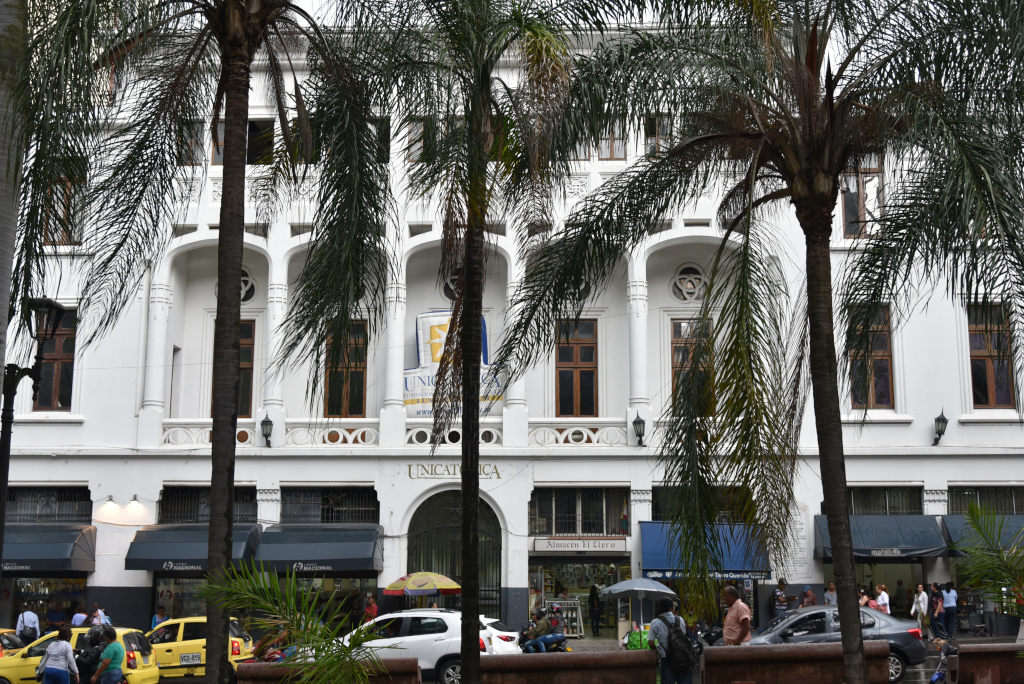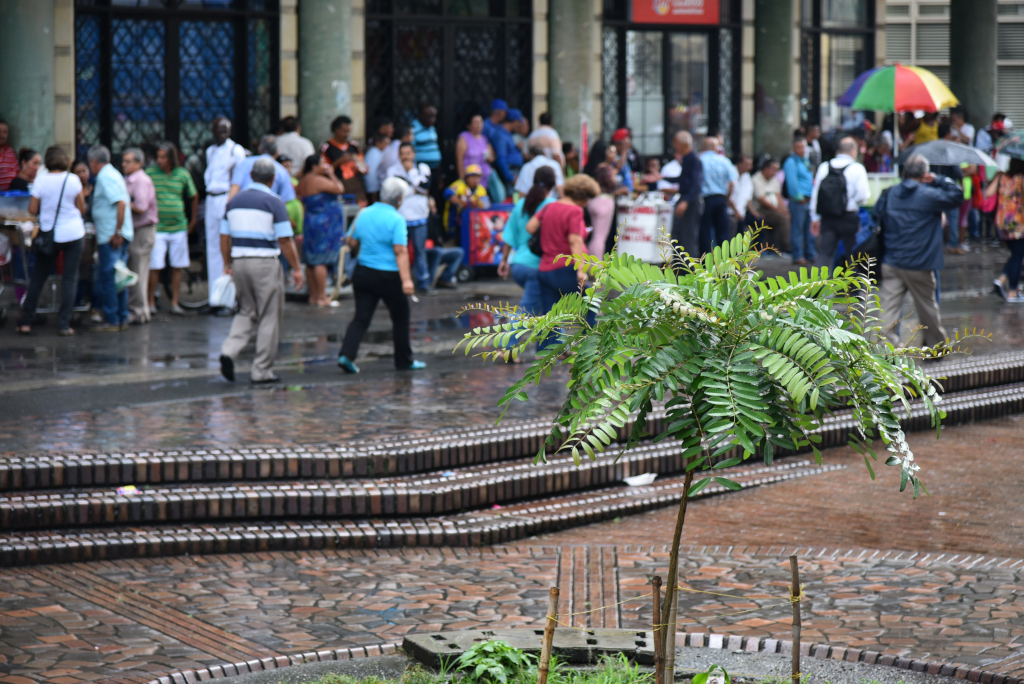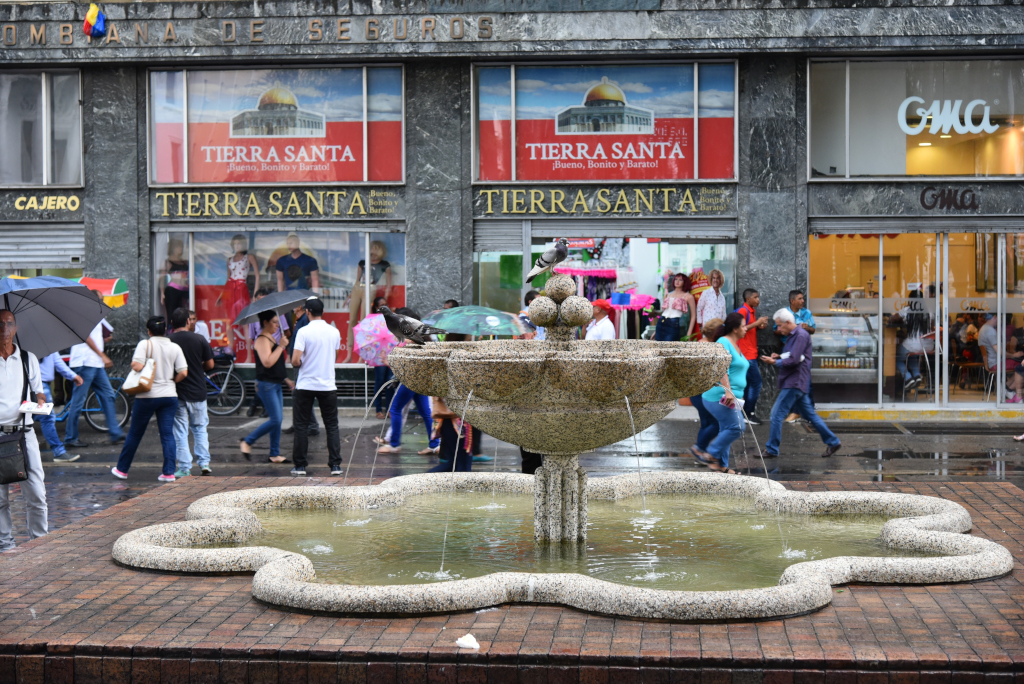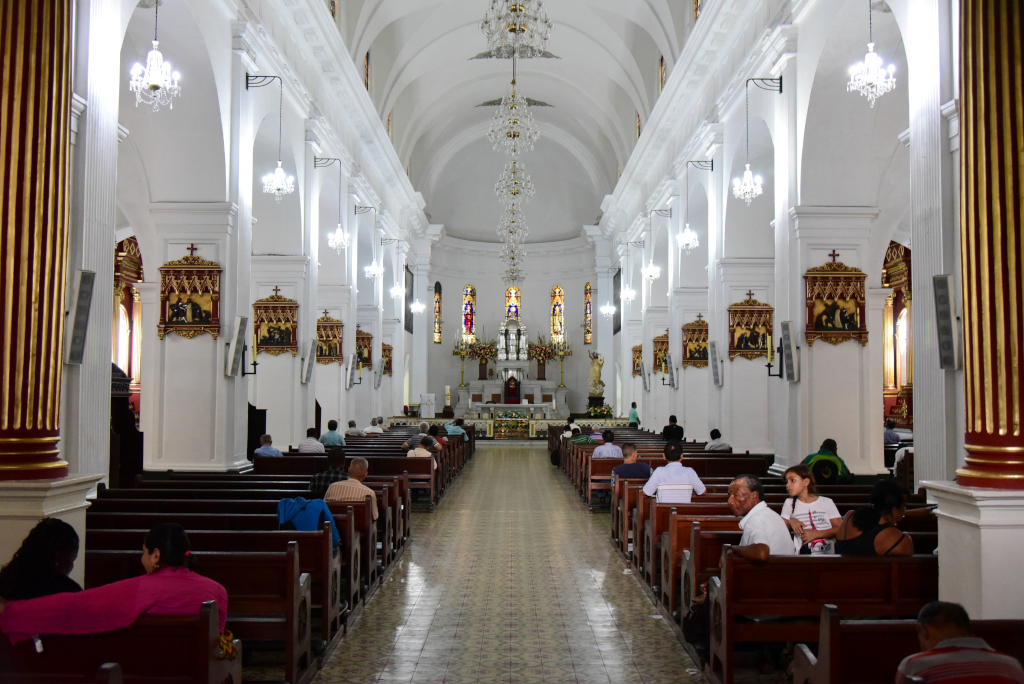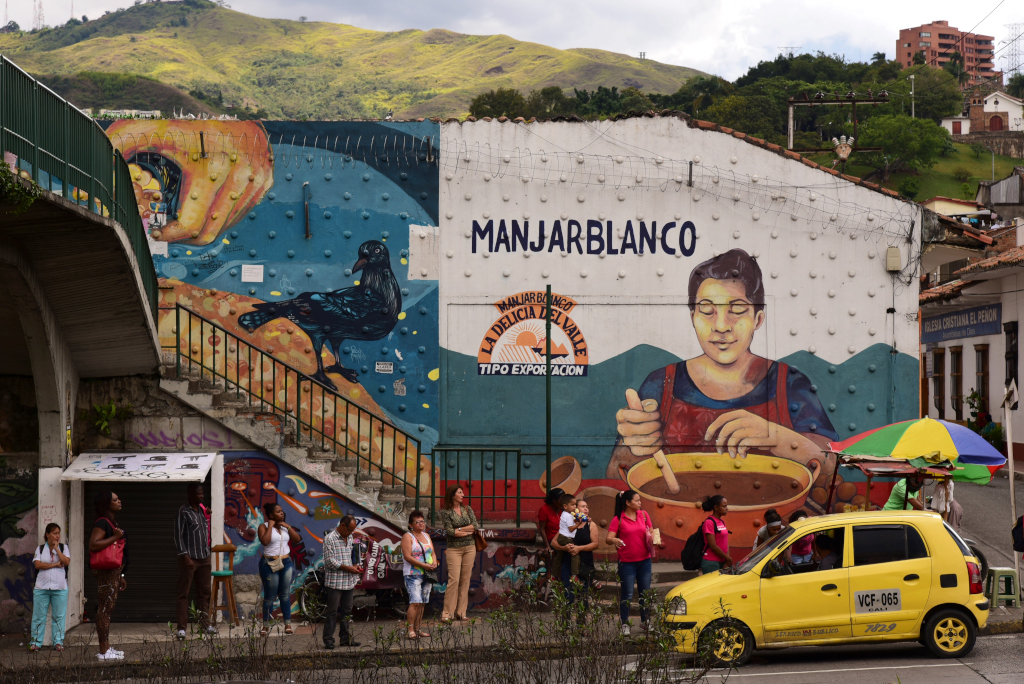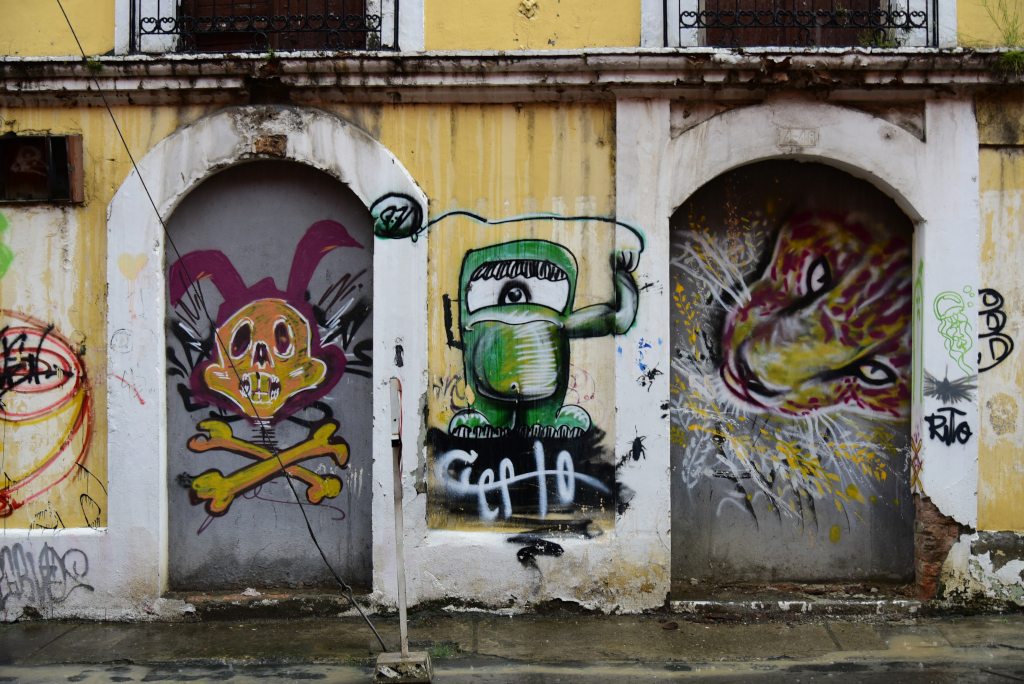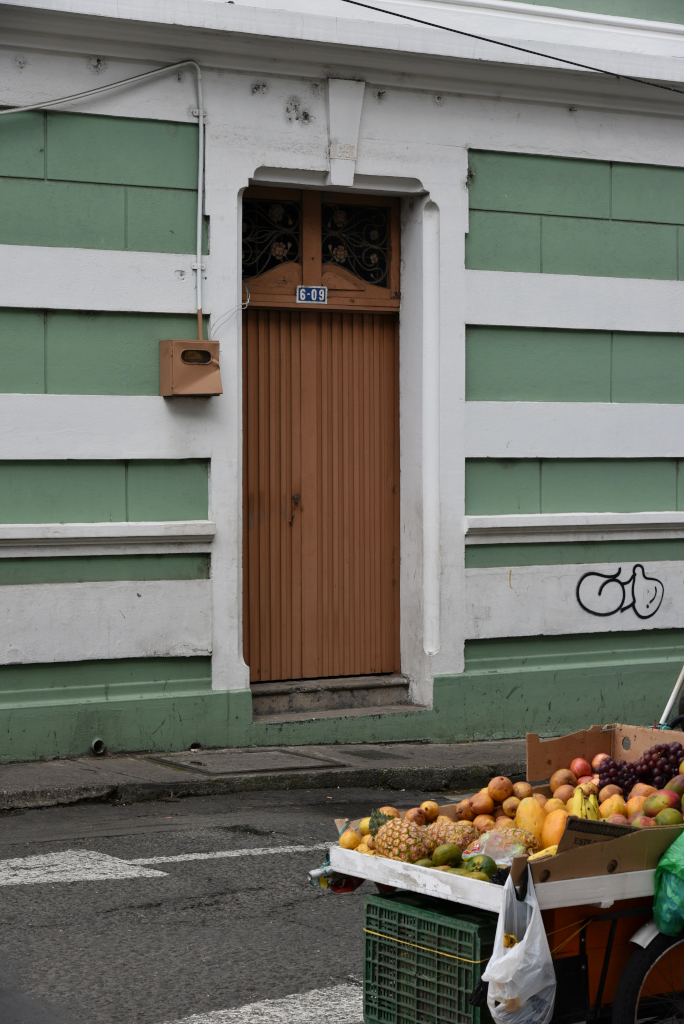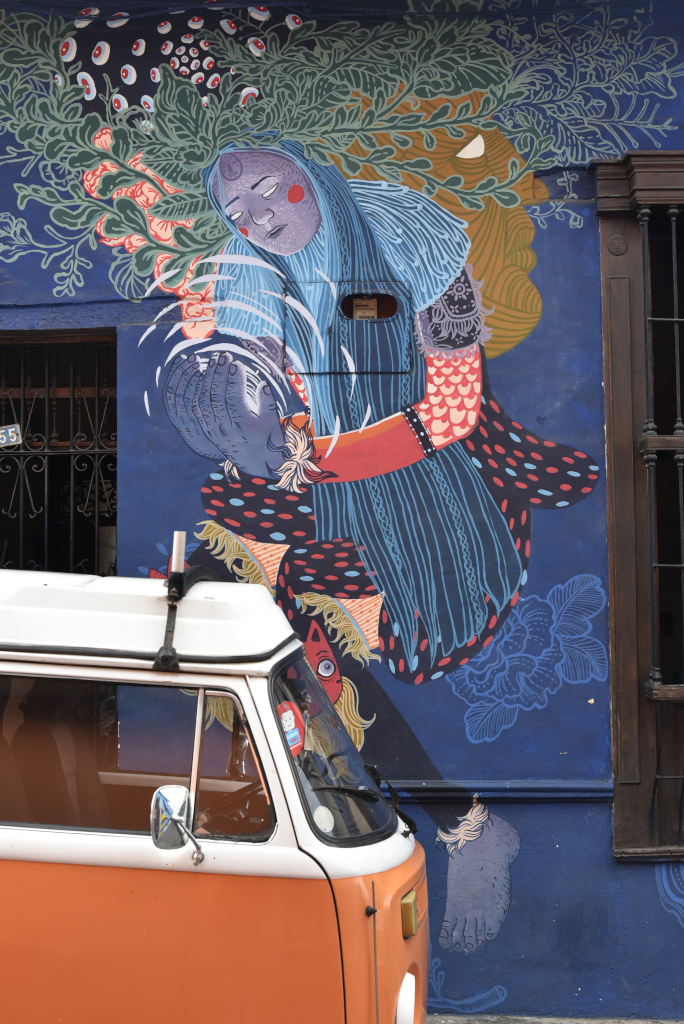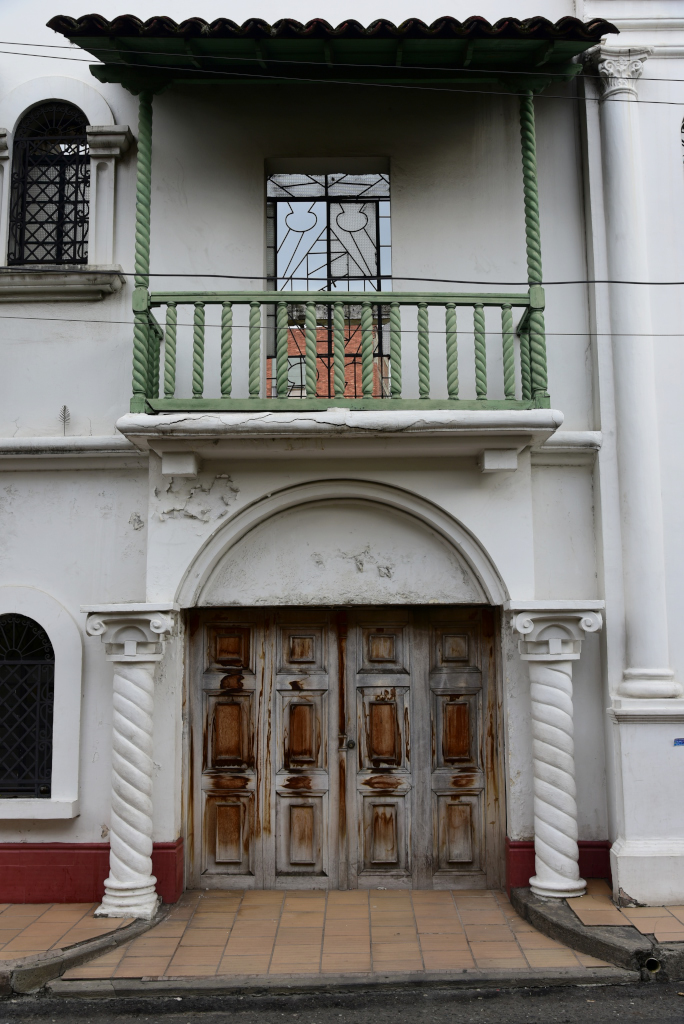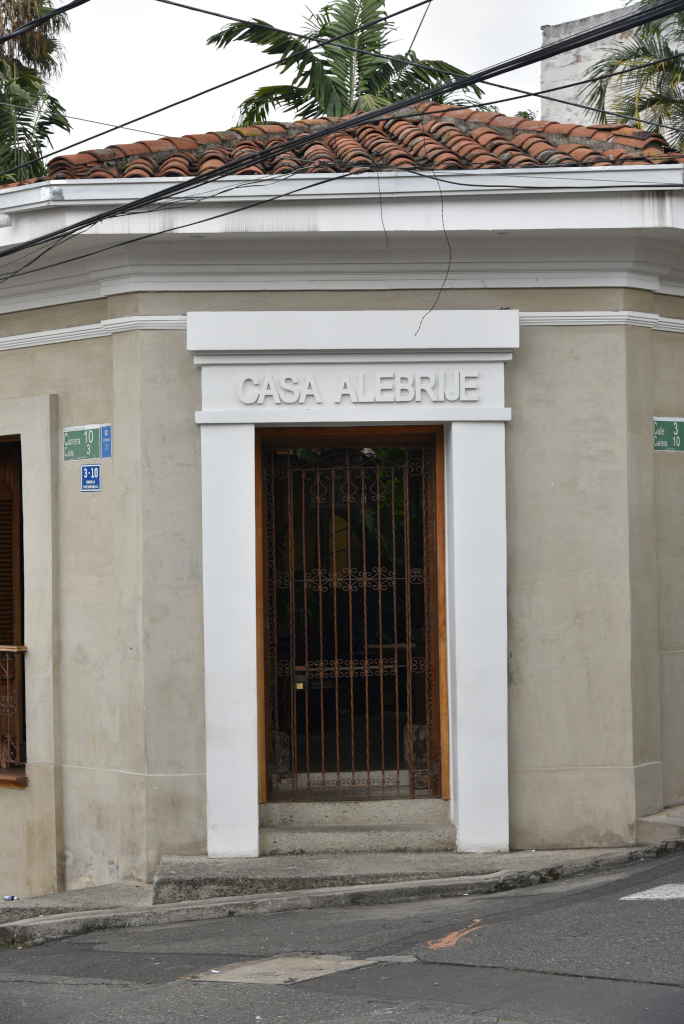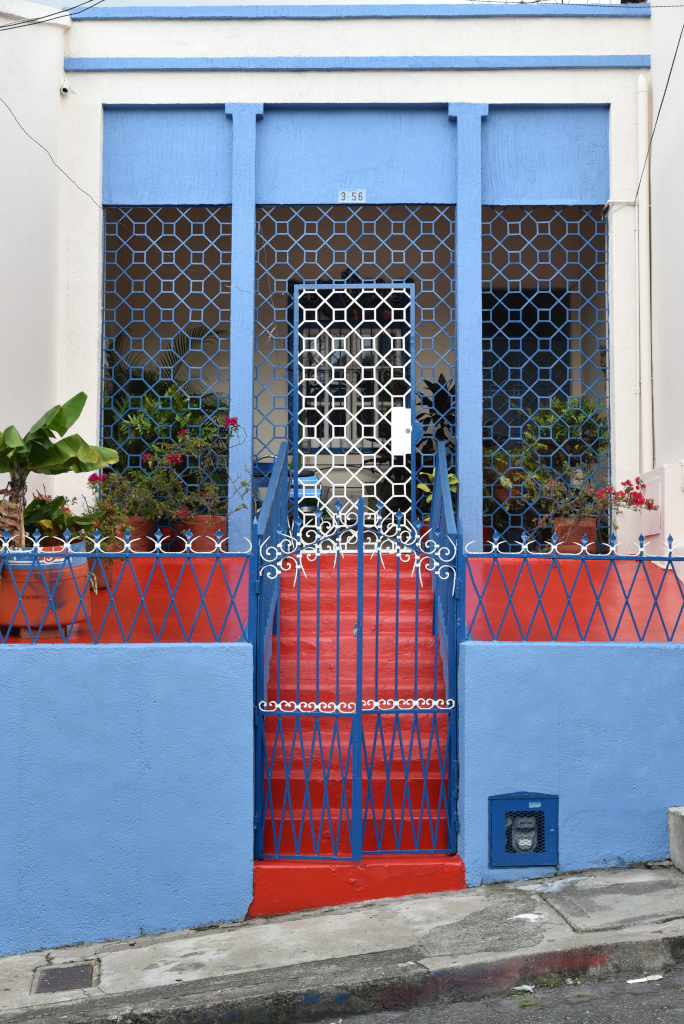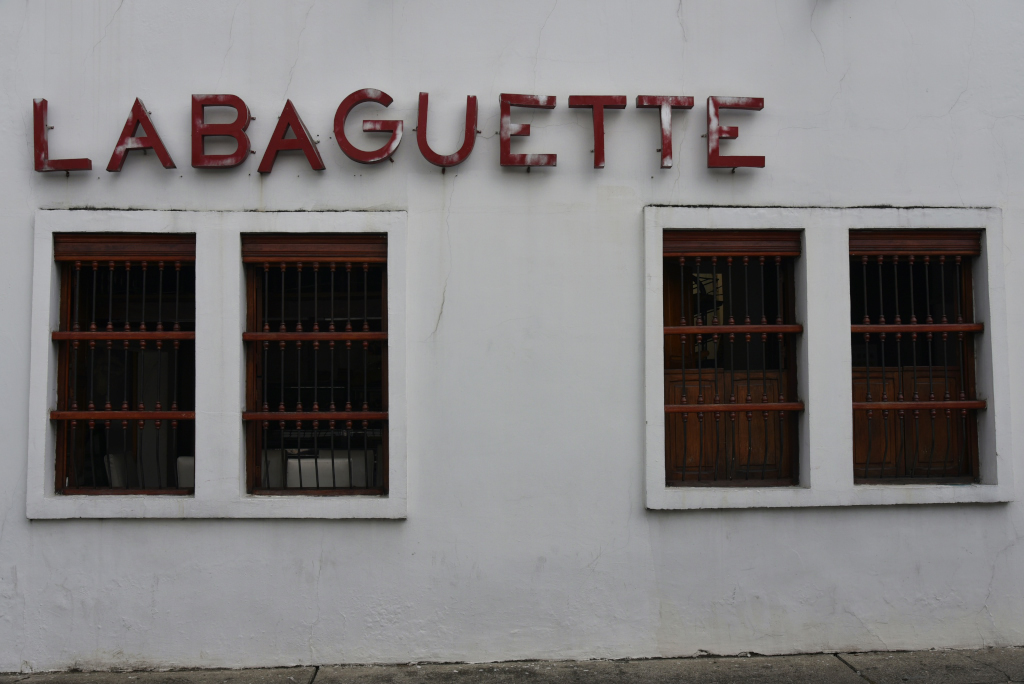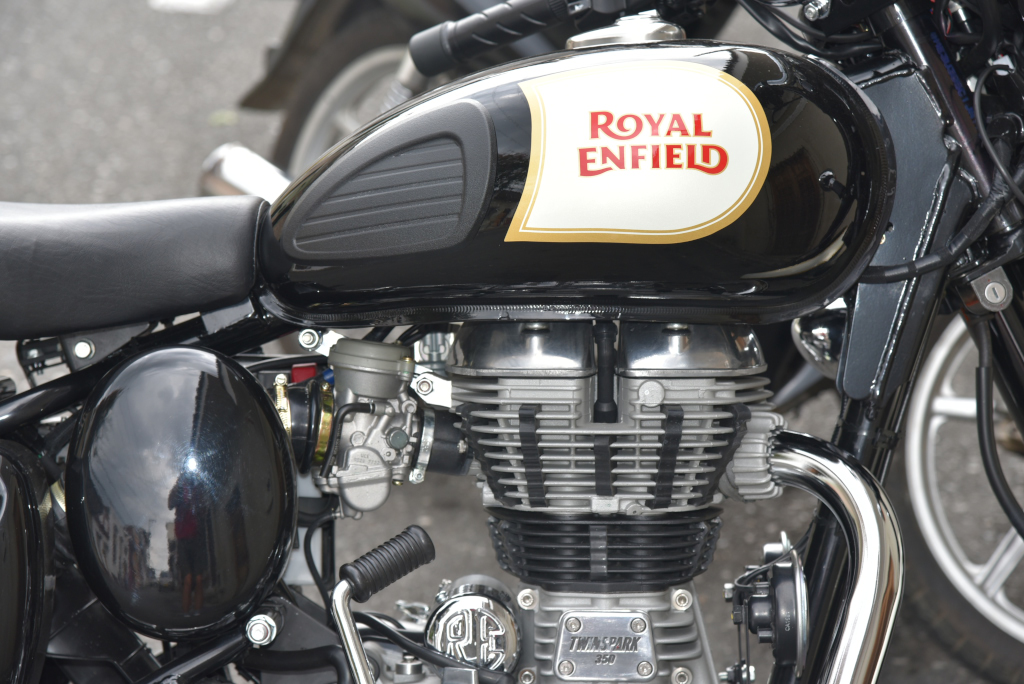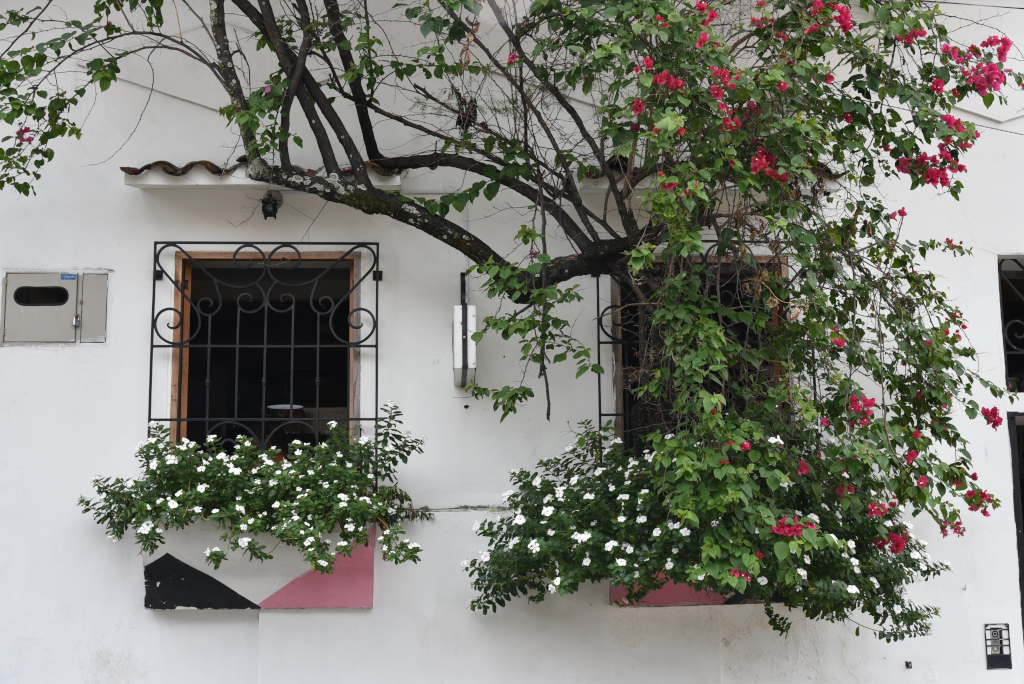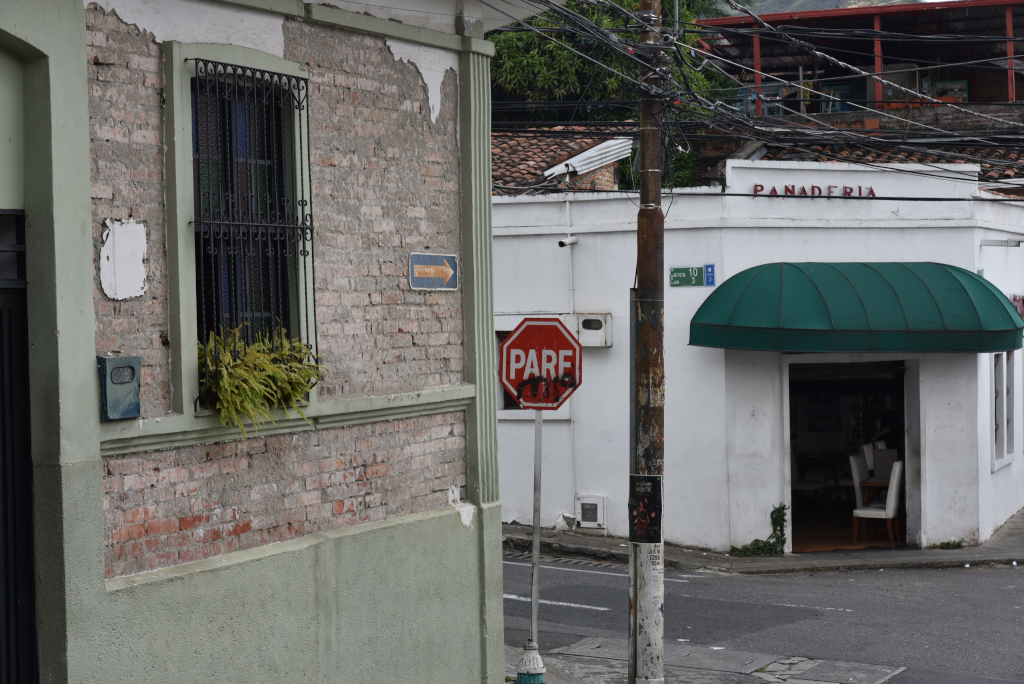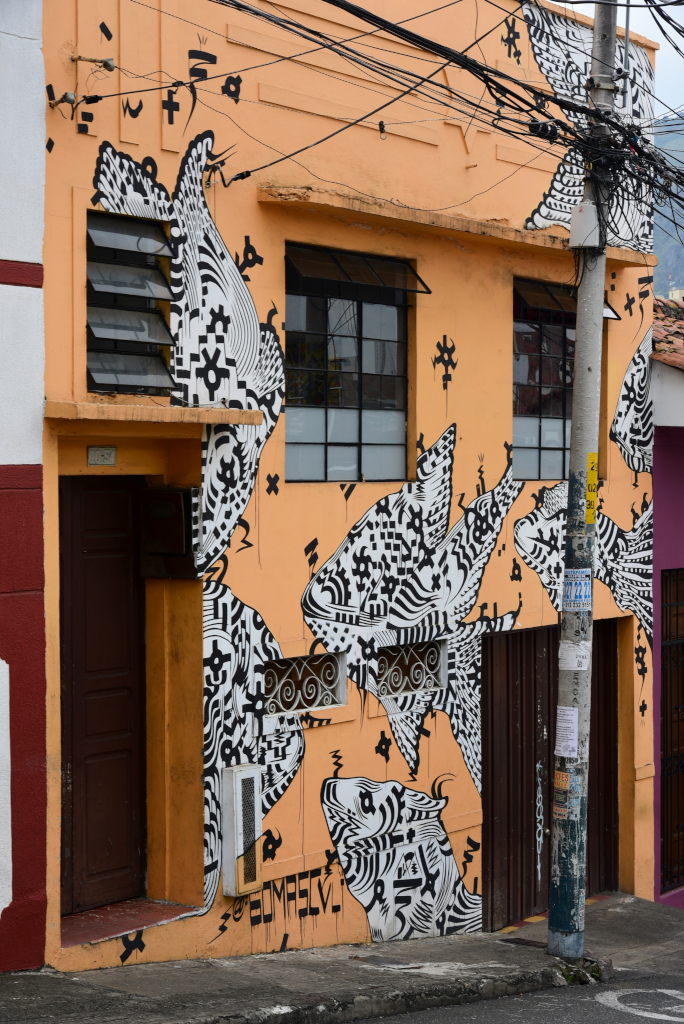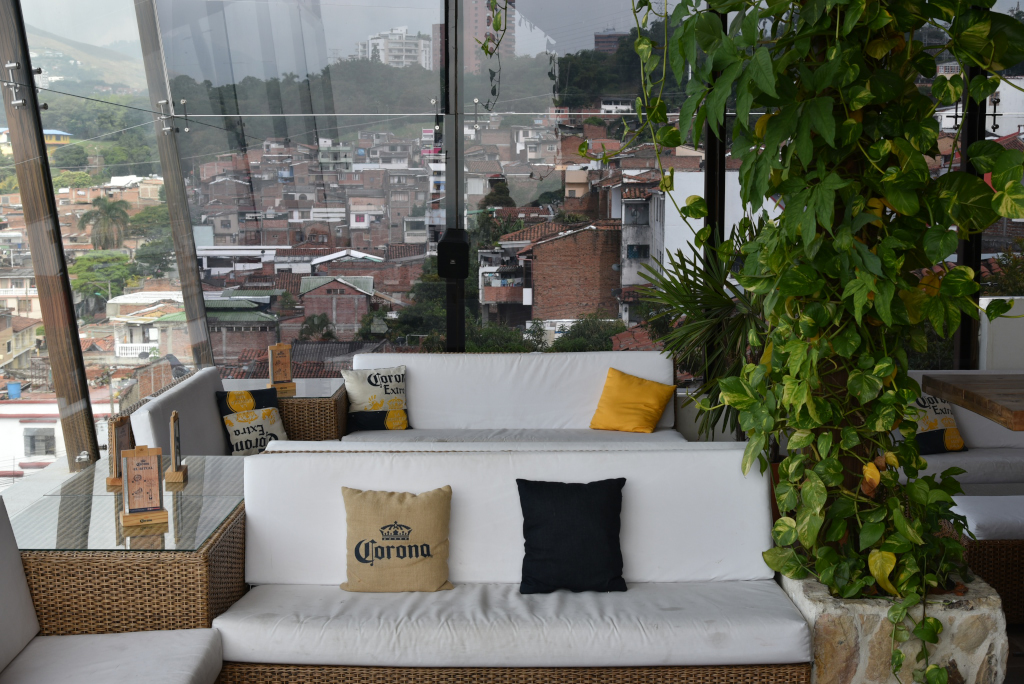April 3rd, 2018
My first morning waking up at the Hotel Terraza de San Antonio, and what a relaxing morning indeed it is. There is peripheral noise from the construction of the restaurant at the front, effectively at the opposite end of the building. The only source of noise in the room could be the upstairs bar, which isn’t open yet, and hence there is no other source of noise.
I visit the posh bar on the rooftop with the fabulous views offered of the area to the south as well as the small terraces on the lower floors rife with huge potted plants whose leaves and tendrils wend every which way. The rooms underneath open onto the intimate terraces facing the world below, many of the rooms in the hotel spectacular in their own unique ways, a very appealing characteristic of the hotel.
Two blocks downhill from Carrera 12, the Panadería Casa Blanca, nothing unusual, but a return to the real Colombia, far from the pretensions of San Antonio. And even so, the area is still fairly immaculate relative to the typically more plebeian neighborhood. The strapping Venezuelan employee is happy to promote the breakfast options available in the bakery, the biggest attraction being the tasty salsa. He confides that the reason it is so good is that the woman who makes it is from Baranquilla, where people like their food on the lively side.
The Mauro Phazán gallery across the street is a rarity in the country, highly original artisanal pottery displayed in a lavish colonial-style palace, fronted by terraces overgrown with tropical plants. The ceramic figures the owner creates are colourful, whimsical, but also elaborate, with bold crests, wings, buttoning, costuming, and other ornamentation. Much of the work on display are figures, although there are also vases featuring elaborate and colourful embellishment. The work is stunning and yet fragile, and would represent an incredible risk to travel with. If I was flying home from Cali, perhaps, but with some ten days of travel time prior to reaching Bogota, I would regret the purchase of any of these beautiful items almost immediately.
The hunt for coffee arises, and the vicarious state of San Antonio’s openings means that I may be on a somewhat frustrated hunt for just the right beverage. It turns out that most of the coffee shops in the area open after 4 pm, which is kind of useless. A vine-enshrouded establishment appears on Calle 3 that I had seen before, the Corinne Cafe, somewhat of a hipster establishment with a number of young Europeans hunched over their laptops. Next to me, a young German woman from Crailsheim, engrossed in her writing in a notebook, and no, not the electronic kind.
She concurs that the experience of writing longhand is far more dynamic and personal than writing with a computer. Using an electronic device seems more premeditated, more static, and has less of a personal touch. We switch gears to Germany, its people, the idiosyncrasies of the culture, the things that are wonderful and those that are intolerable. How beautiful small-town Bavaria is, and yet how difficult the people, in contrast to the relaxed and open-minded flair of Cologne, where she lives now.
San Antonio swoops across the crest of a hill, its low-slung colonial architecture rich in wrought iron window and stone door frames, painted window sashes, and terracotta roofs. Since my arrival, I see very few people on the streets. Perhaps this is some sort of neighborhood whose real estate consists largely of empty investment properties? What a concept that would be! A few spaces here and there seem to be open, but not many.
To the east of Calle 5, which splits Cali in two, La Merced, possibly the city’s oldest barrio, although much of the historic architecture is gone. The area is more diverse than San Antonio, consisting of retail, office buildings, trendy establishments, educational institutions, storefronts, churches, and cultural institutions. The brilliant murals that characterize Colombian towns abound in this neighborhood.
Crumbling and renovated palaces nestle amidst the stark towers, ambulatory vendors giving the drab streets a touch of colour – and viability. Some inebriated men call to me, one wanting to use my camera to take some photos, but that may not be such a good idea. The city springs to life round the Plazoleta de San Francisco, the church of San Francisco occupying the north side of the plaza, the institutional offices of the government of the departamento of Valle de Cauca on the south side.
The plaza has a sense of charm and liveliness that is suddenly suppressed with the sudden onslaught of rain. I soldier on, but the day is done: as is the case every day here, once the rains set in, they ain’t going away, and it will pretty much rain heavily until the late afternoon. The usual risks of getting my camera wet apply, very annoying indeed. I simply do need to start my days far earlier to mitigate the danger of getting myself and my camera soaked by the mid-afternoon.
The vestiges of architectural bonhomie dissipate further east to San Nicolas, every storefront devoted to the sale of clothing, shoes, sportswear, the mostly smart shops entirely blocked by rows of stands on the street, selling much the same merchandise as the neighboring stores. And with the heavy rain, potential customers are more likely to favour the comfort of the stores than the exterior stands, if only to stay dry.
The stands of cut fruit are always a star attraction for me in terms of the quality and freshness of what is offered. Cups of watermelon, mango, guava and papaya pieces, shaved mango, and Cape gooseberry. Watermelon may seem like an unexceptional choice, but this watermelon is incredible. I ask about the fruit with the ruddy green rind that looks like squash – it is sapote. Really? I have rarely eaten it, but remember it being amazing!
The barrio San Nicolas to the east is a largely commercial affair, the frenzy of street-based retail muted by the pouring rain. I return on Carrera 5 towards San Antonio, probably the most historic streets of La Merced, the Museo Arqueólogico, Museo de Arte Religioso, the monumental Centro Cultural, the neoclassical Teatro Municipal, and best of all, the Plaza de Cayzedo.
The Plaza de Cayzedo appears to be a historic centre of town, with its soaring Belle Epoque and modernist structures, including the Universidad Catolica, the Ministry of Justice in French Baroque, San Pedro, the city’s cathedral. The Hotel Astoria seems like a luxury hotel out of an Orwellian nightmare, although more likely a faded relic from another era that has not weathered the years too well, a common plight, particularly in this neighborhood, the buildings dating from mid-century ironically having fared much worse than those from prior centuries. Nevertheless, the Plaza de Cayzedo overall is a regal beauty, with its elegant square and soaring, slender palm trees.
The rain is now so heavy I am almost immobilized. Leaving the shelter of an overhang is a guarantee for getting soaked. Worse, the streets are flooded with water, and wading into the street guarantees getting my other pair of shoes that were still dry this morning wet. I have been carrying around my primary pair of shoes in a wet, mouldering state for the last few days, as nothing dries here in the constant downpour and high humidity.
Frustrated, I circumambulate around the arcades surrounding the cultural centre, unsure of how to proceed. On the north side, I find a tourist information office, where I discover not only more brochures for Colombian departamentos that I found so useful in organizing my travels in the last few months, but supplementary booklets as well, provided detailed information on all of the attractions, a level of information that the best-informed Colombians could only dream of. And they will serve admirably in organizing future trips in the country!
Walking down the rainy Carrera 4 brings back memories of yesterday late afternoon, cold and soaked, wondering what to do with myself. I am again not particularly hungry, but I should eat prior to the evening getting away on me. But what and where? San Antonio is a problematic as a choice, not least of all because of the fact that many places are still closed.
It seems to me that the El Peñón barrio may offer better options for dinner. Walking by the Absenta bar, an older man from Brooklyn tells me he the place has good food, the particular lure today being the half-price food. The fact that such a posh, upscale restaurant has half-price food is very alluring, and so I decide to splurge, ordering what turns out to be a fabulous ceviche and a decent filet mignon. Then again, if you are in the market for such luxuries, you probably shouldn’t be complaining. Consistent with like upscale establishments, alcoholic beverages are ridiculously expensive, ostensibly the place restaurants make heaps of money.
Edward lives in Salt Lake City now. It is unclear what he is doing in Cali, but seems to be spending a fair amount of time in town, if not in this particular restaurant. He is apparently waiting for some friend of his, but won’t elaborate as to who the friend is. Not that I really care: I came to eat, and then get back to my other paltry obligations. In order to more appropriately accommodate his friend allegedly about to arrive, he moves to another table, presumably to achieve some distance from me in anticipation of his friend’s arrival. But his friend does not arrive, which compels him to open up, although I barely here what he is saying above the music, seated at the neighboring table.
No problem! It seems I coudn’t have heard correctly when he seems to mention that he worked for the Pasadena Jet Propulsion Laboratory. Seriously – doing what? He tells me he wrote the operating system for the Pioneer (or was it Galileo) spacecraft. He says offhandedly ‘You know, like the Windows software, but used to run the space craft.’ I look at him in disbelief, and he evidently relishes the shock effect of what he just said.
Equipped with a BSc in Mathematics and an MSc in Mathematics and another one in Physics, he worked with the glitterati of the science world, and naturally loved the world he lived in. He still visits with his former colleagues who he considers friends, although is now retired, and probably more than somewhat bored, coming from such an illustrious background.
It turns out he is waiting for his friend from the Hotel El Peñón, the Czech owner of the hotel, but his friend never appears. ‘What to do with a friend that stands you up?’ he questions me. I deflect repeatedly, not wanting to be dragged into a subject rich in nuance and wide-ranging interpretation. And no, he won’t be using Facebook to connect any time soon, his particular motivationn being that he wants to establish a distance from the potentially aggressive promotion of poorly reasoned orthodoxy.
One thing I have noticed about San Antonio is that there are no grocery stores anywhere. It turns out that the next larger one is quite the trek away. Not that I have any big plans for cooking, but just to buy fruit, but all the same. Of course, there are a few small stores near me that sell fruit …

